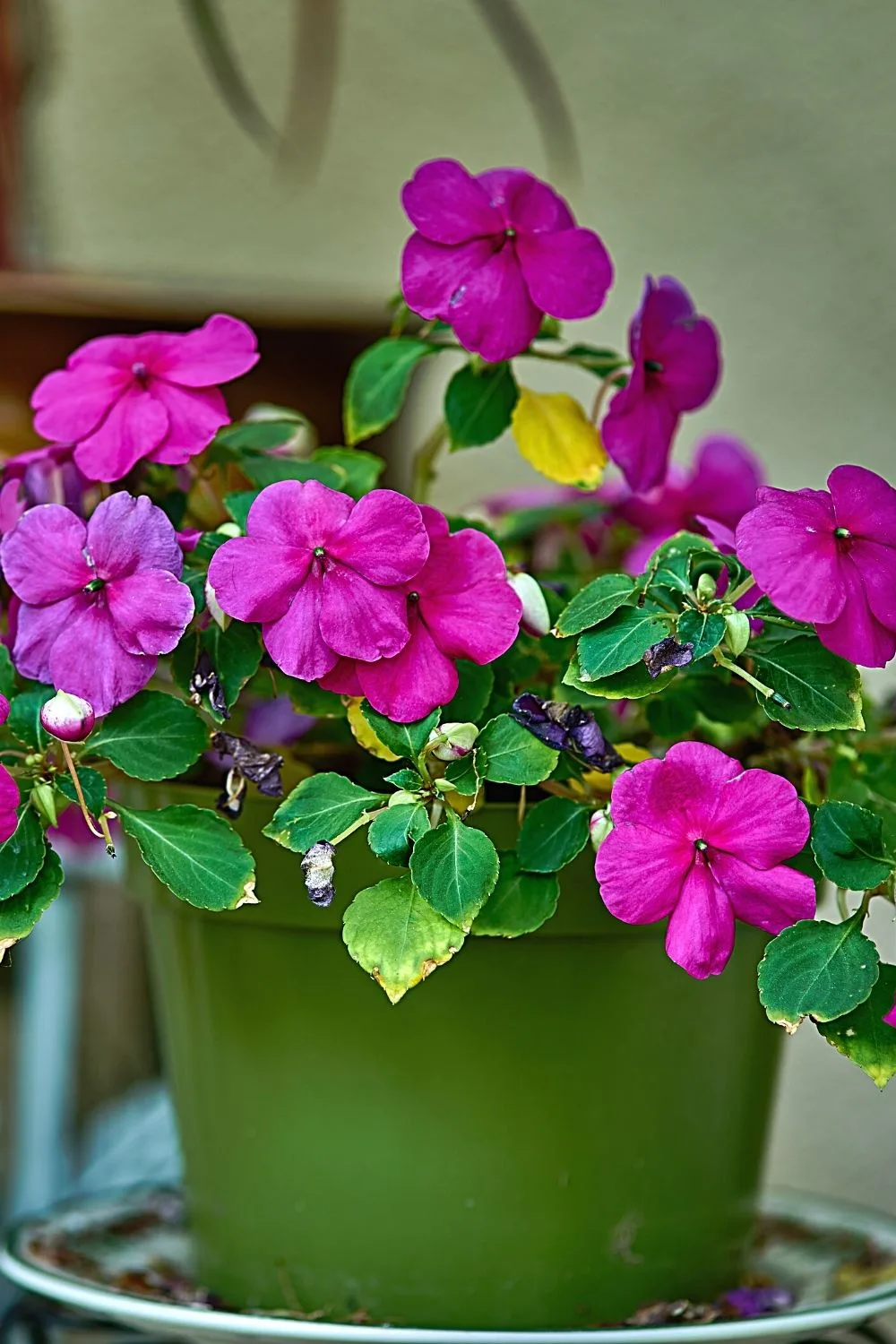Planting on a north-facing balcony is not easy, primarily due to the lack of sunlight.
There are very limited options that you can plant successfully if you live in a house with a north-facing balcony.
Since the south end of the building gets the most of the sunlight, all you are going to be left with is a little bit of sunlight during the time of sunrise.
This is the reason that north-facing houses do remain cooler in summers as compared to south-facing houses.
Also, this is the reason why planting can be a little difficult on a north-facing balcony.
However, you do not need to worry as we have got an ultimate package for you to decide what plant do want to grow in your north-facing garden.
Here are the names of 30 plants that you can plant successfully throughout the year without having to worry about providing enough sunlight for your potted plants.
30 Plants for North Facing Balcony
- Impatiens
- Begonia
- Periwinkle
- Bleeding Heart
- Fuchsia
- Climbing Hydrangea
- Wishbone Flower
- Forget Me Not
- Coleus
- Caladium
- Ferns
- English Ivy
- Spinach
- Hosta
- Asian Greens
- Lettuce
- Parsley
- Mint
- Lilyturf
- Primroses
- Succulents
- Bugleweed
- Yew
- Flowering Quince
- Flowering Dogwood
- Canadian Hemlock
- Spotted Dead Nettle
- Trout Lily
- Foxglove
- Fine Fescue Lawn Grasses
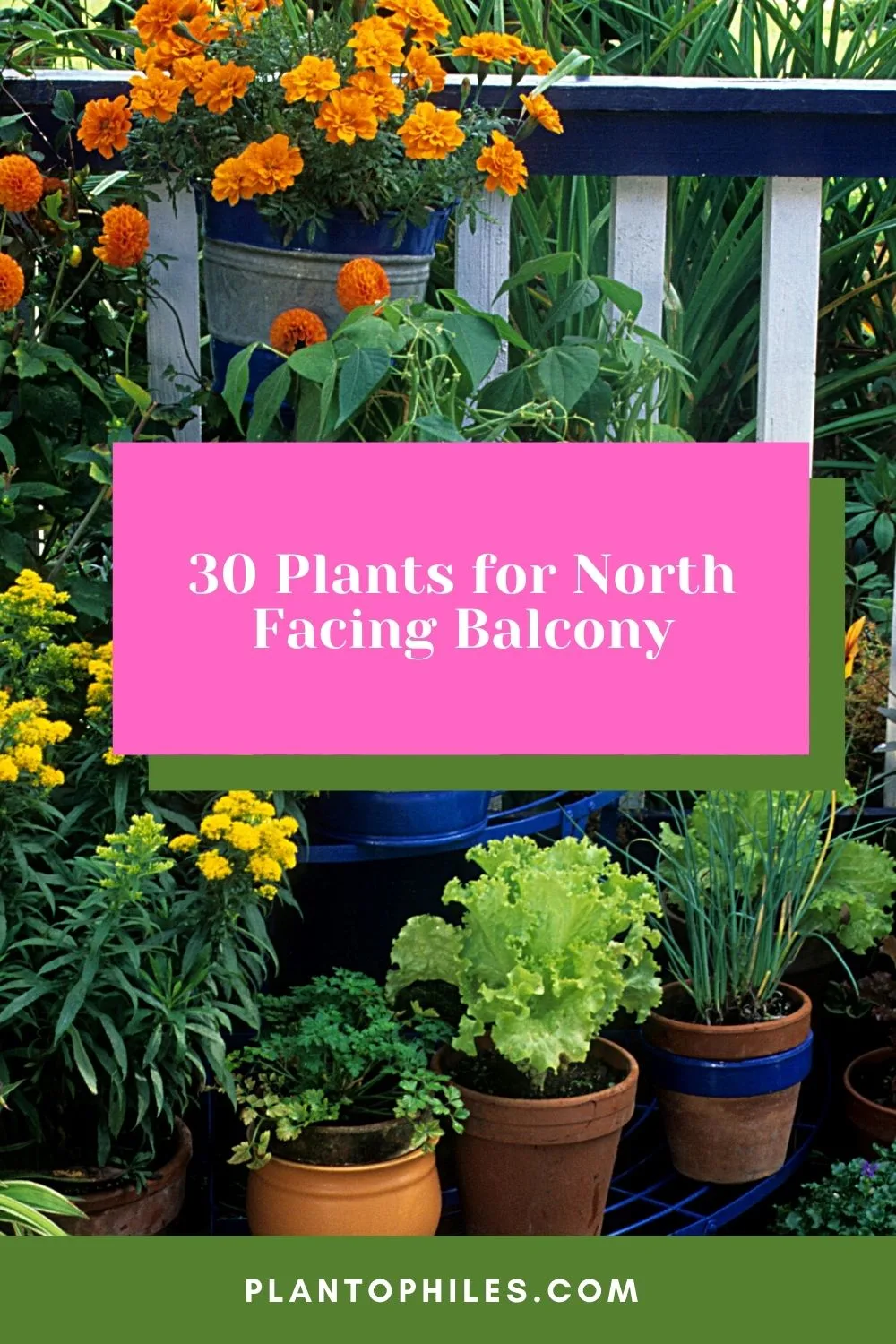
30 Plants for North Facing Balcony
Table of Contents
30 Plants for North Facing Balcony
1. Impatiens
Impatiens can be an ideal choice for your north-facing balcony as it requires minimal sunlight and thrives in the shade.
They do well in containers and garden beds according to the University of Minnesota.
However, even if it is kept in sunlight for a few days, it will show no signs of infection, non-blooming, or discoloration.
It produces beautiful flowers in a variety of colors, including orange, red, pink, and coral.
Its binomial nomenclature and basic plant care requirements include:
- Scientific name: Impatiens walleriana
- Family: Balsaminaceae
- Plant Type: Perennial
- Kingdom: Plantae
- Temperature: Prefer humid weather, and show signs of wilting in extreme sunlight.
- Fertilizer: Water-soluble fertilizer every two weeks
- pH: Slightly acidic pH of 6.0-6.5
- Soil: Should be rich and well-drained
- Lighting: minimal sunlight required; in fact, they thrive in shade
- Humidity: Requires humid weather
2. Begonia
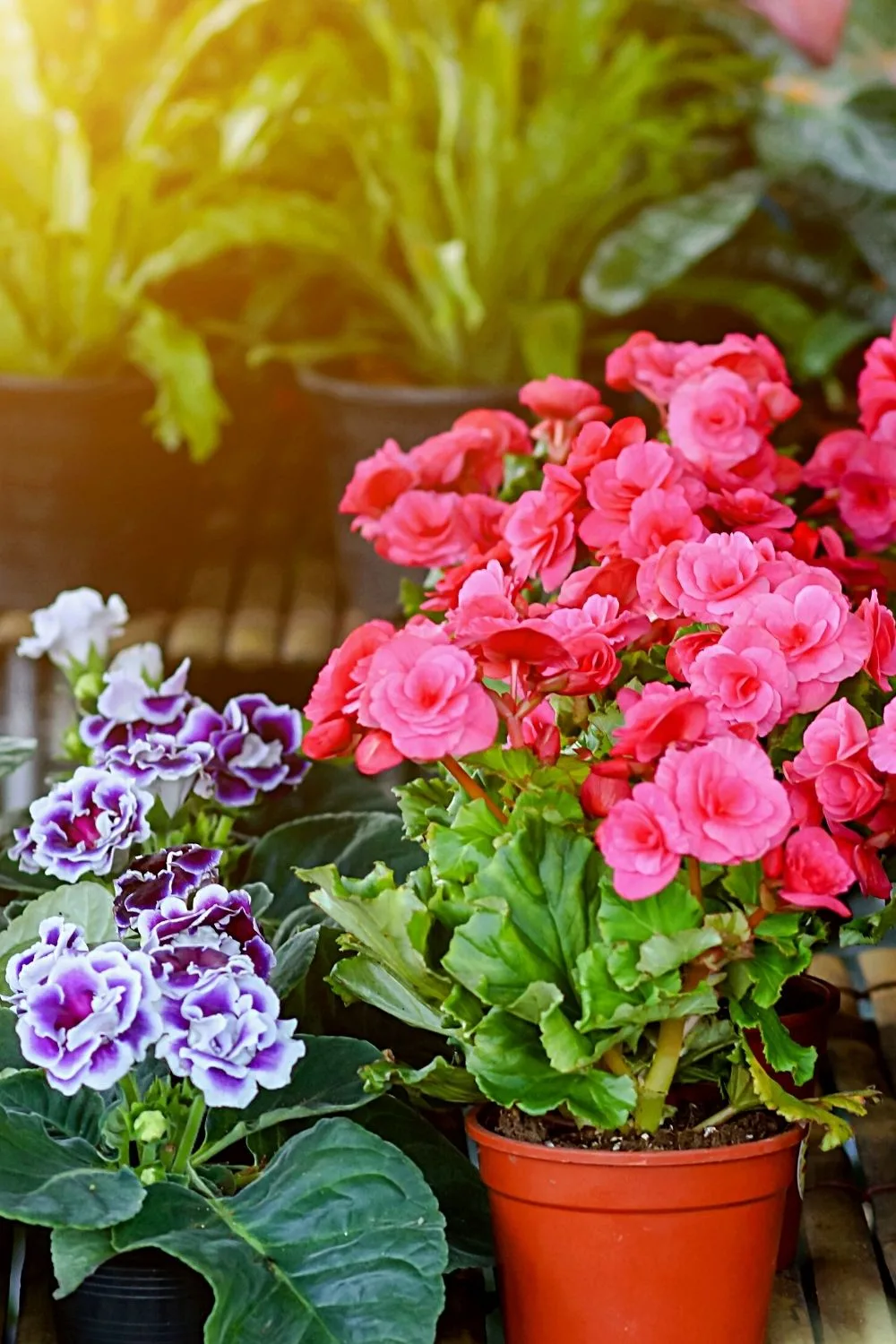
Though Begonia is a colorful plant to place in your north-facing garden, should be kept out of reach from children
Begonia is highly toxic to pets and children; therefore, it should always be kept away from their reach.
It is a waxy plant that produces flowers in different shades such as pink, yellow, white, or orange.
- Scientific name: Begonia semperflorens cultorum
- Family: Begoniaceae
- Plant Type: Annual
- Kingdom: Plantae
- Temperature: Thrive in warm and humid temperature
- Fertilizer: Quarter strength fertilizer every two weeks
- pH: Slightly acidic pH of 6.0-6.5
- Soil: Airy, light, rich and well-drained
- Lighting: partial sunlight required; however, they thrive in shade
- Humidity: Requires humid weather
3. Periwinkle
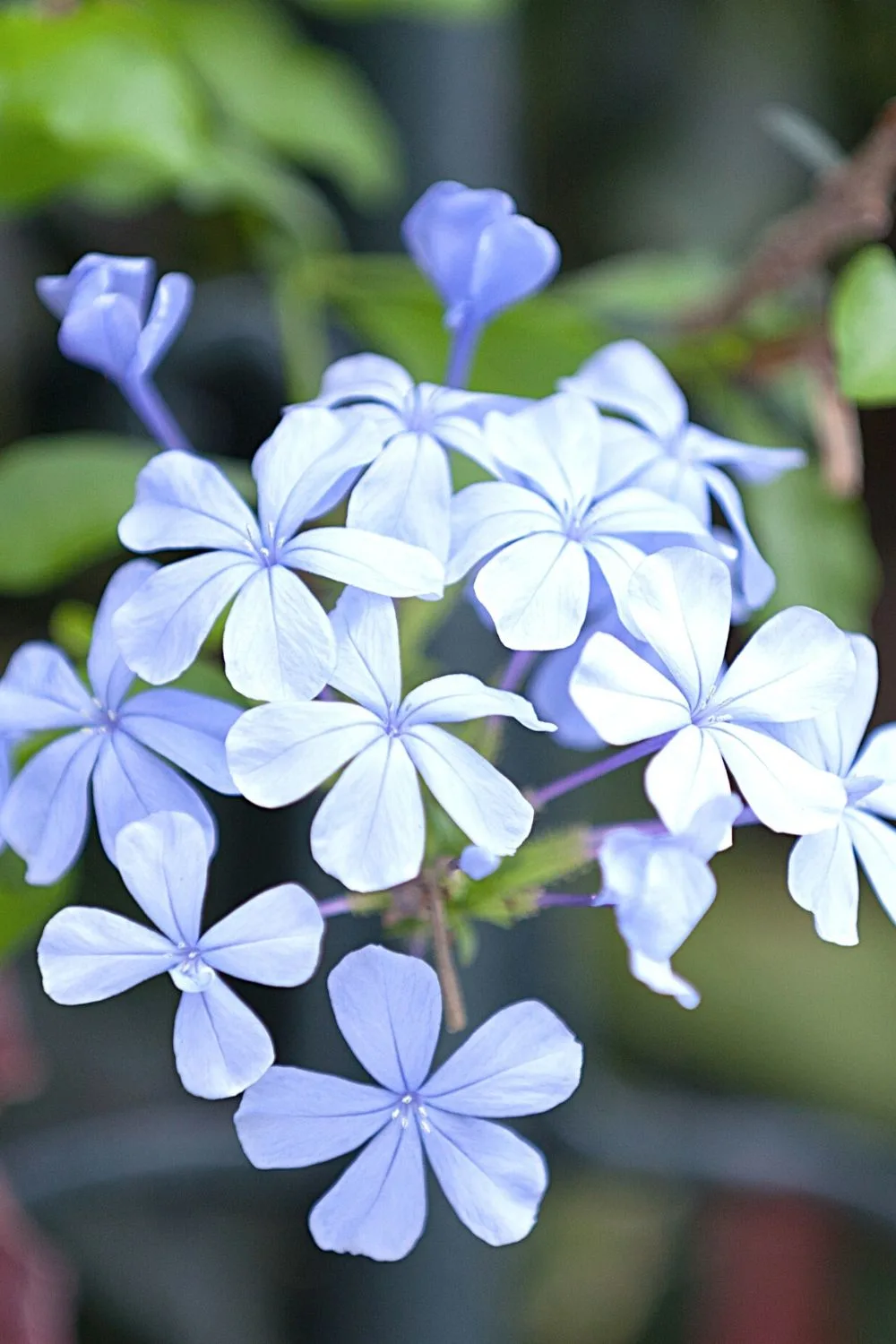
Periwinkle is a great plant to put in your north-facing balcony as it thrives even in the absence of light
Periwinkle, also known as vinca minor, is a great plant for north-facing balconies, as it grows perfectly fine in the absence of light.
This magnificent plant grows into a vine that usually has a purplish color but can also be lavender or white sometimes.
This plant is also toxic to pets and children.
- Scientific name: Vinca Minor
- Family: Apocynaceae
- Plant Type: Evergreen Perennial
- Kingdom: Plantae
- Temperature: Move indoors when the temperature drops to 50 degrees Fahrenheit. Frost intolerant plant
- Fertilizer: once a month with equal parts of nitrogen, phosphorus, and potassium.
- pH: Can be acidic, neutral, or alkaline.
- Soil: Loamy sand
- Lighting: thrives in full, partial sunlight or even shady environment.
4. Bleeding Heart
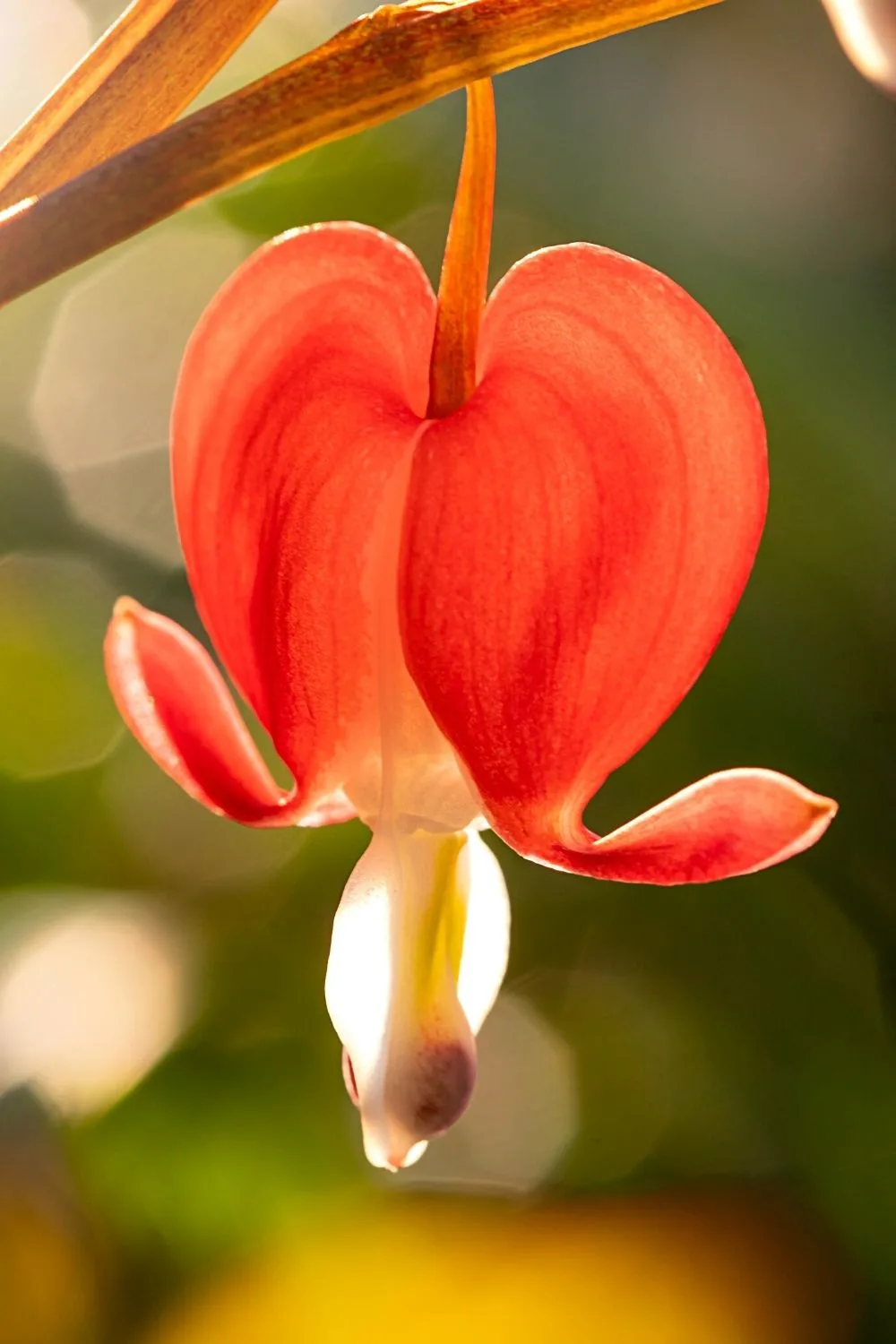
Bleeding Heart is a beautiful plant to place in your north-facing balcony
Bleeding heart, as the name suggests, is a very delicate plant and needs constant care for optimal growth.
As the summer season arrives, its growth retards, and it requires intense protection from light and strong winds.
It produces small flowers in the spring season.
- Scientific name: Lamprocapnos spectabilis
- Family: Papaveraceae
- Plant Type: Herbaceous and Perennial
- Kingdom: Plantae
- Temperature: Ideal temperature for this plant is 55 to 75 degrees Fahrenheit
- Fertilizer: Fertilize only when the soil conditions have deteriorated
- pH: 6.0-6.5
- Soil: Slightly acidic soil infused with rich organic matter
- Lighting: Ideal growth for this plant occurs in partial shade
- Humidity: Great tolerance for humidity
5. Fuchsia
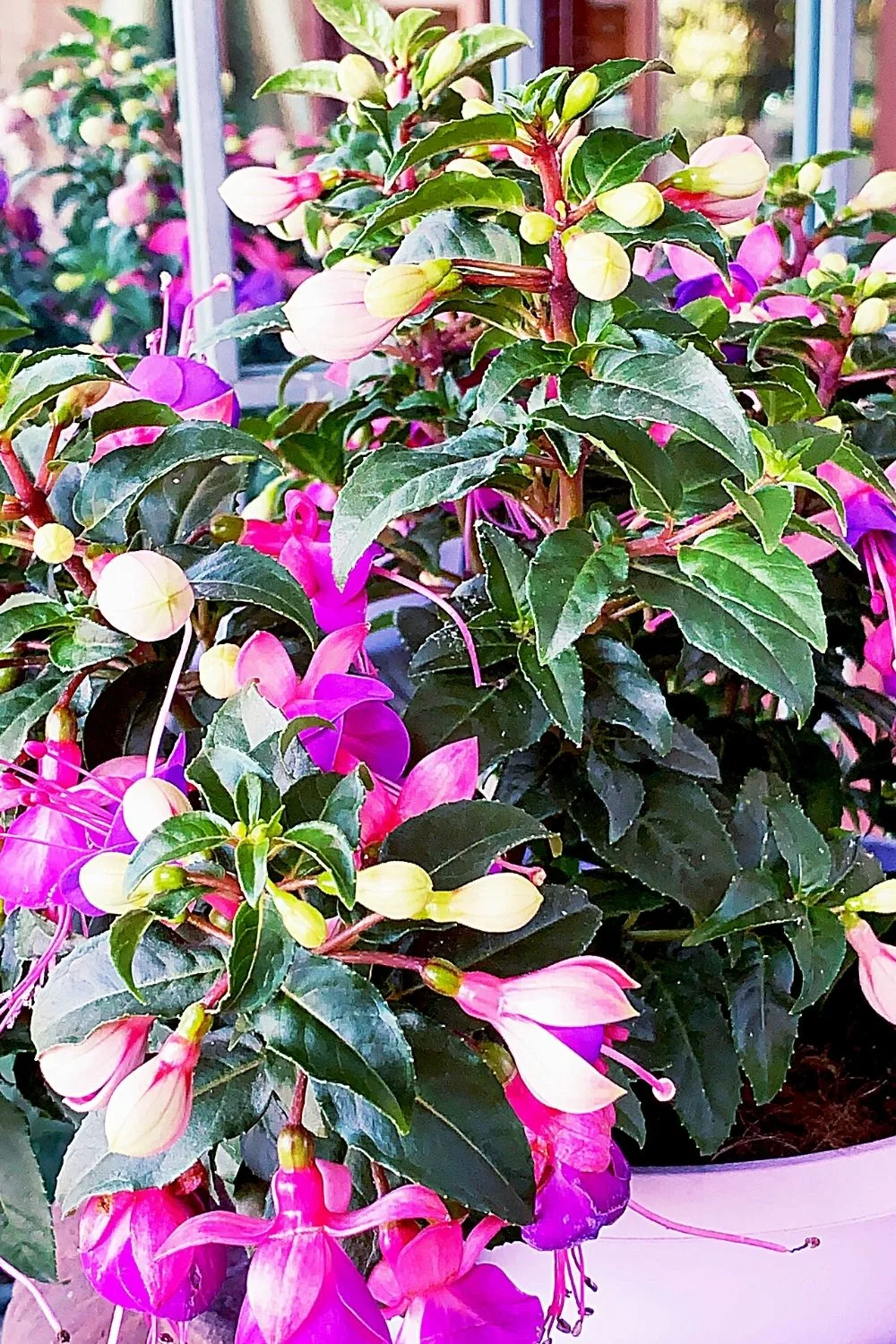
Fuchsia is a decorative plant that you can place inside hanging baskets on your north-facing balcony
Fuchsia is a great plant for decoration purposes and is mostly seen either in hanging baskets or on front porches.
- Scientific name: Fuchsia
- Family: Onagraceae
- Plant Type: Shrub and Annual
- Kingdom: Plantae
- Temperature: Ideal temperature is 55 to 80 degrees Fahrenheit
- Fertilizer: Weekly with diluted fertilizer in liquid form
- pH: Slightly acidic to neutral pH
- Soil: Moist, rich, and drained of excess water
- Lighting: Thrives in partial shade
- Humidity: require humid weather conditions; may require artificial humidity also.
6. Climbing Hydrangea
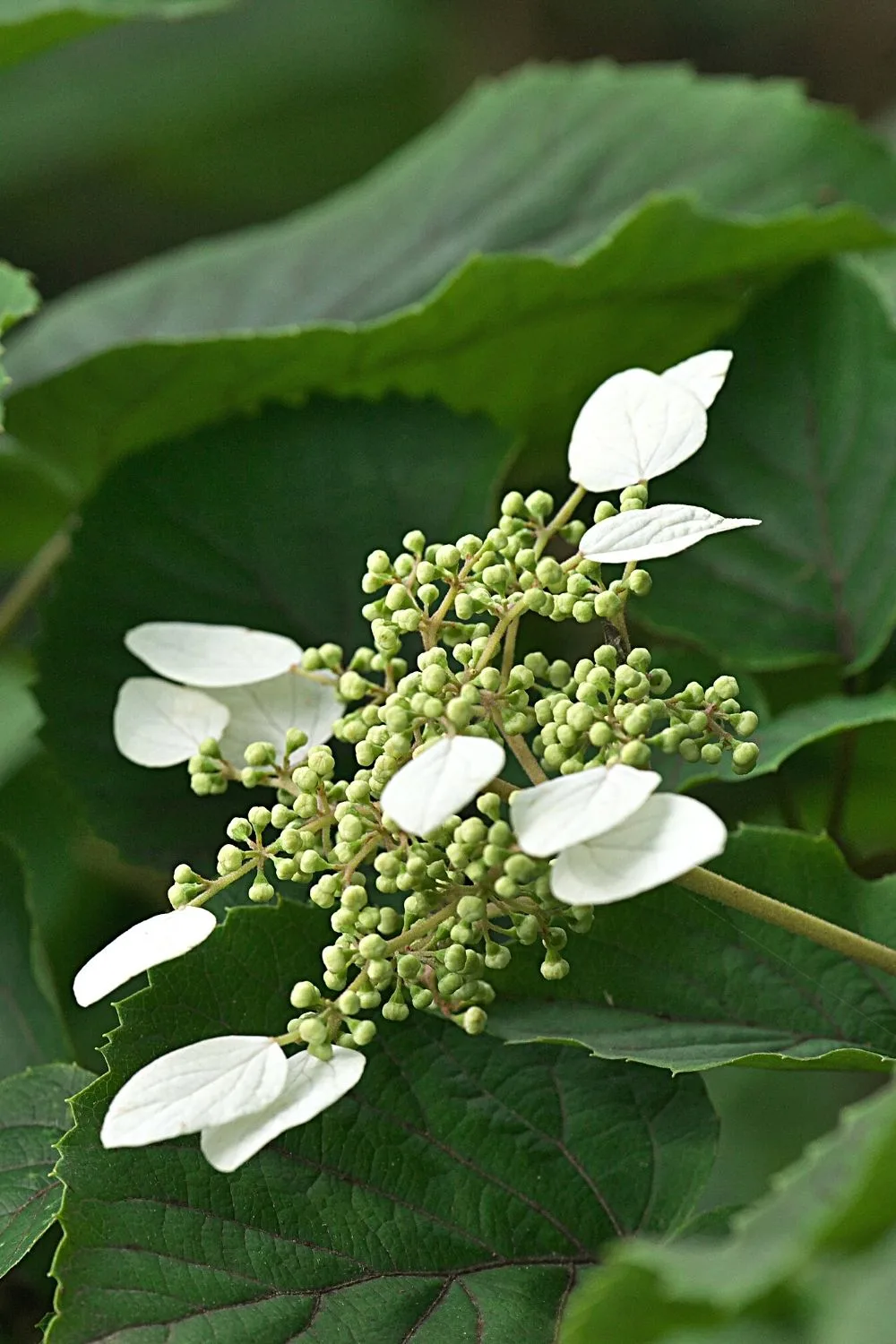
Climbing Hydrangea, though it prefers sunny locations, can thrive in shady north-facing balconies
Mostly seen over the railing, this plant produces white blooms from the month of May to July.
Although this plant blooms perfectly in full sunlight, it will do equally well on your north-facing balcony as well.
- Scientific name: hydrangea anomala petiolaris
- Family: Hydrangeaceae
- Plant Type: Vine Plant
- Kingdom: Plantae
- Temperature: Around 70 degrees Fahrenheit in the daytime and 60-degree Fahrenheit in the nighttime.
- Fertilizer: Mandatory to fertilize with rich compost before the plant begins to bud.
- pH: Slightly acidic
- Soil: Acidic soil, moist yet well-drained
- Lighting: Will thrive either in full or partial shade.
7. Wishbone Flower

Wishbone Flower is best planted on your north-facing balcony after the frost season has passed
Giving brilliant colors to your balcony, this plant is quite renowned for its trumpet-shaped flowers that grow with yellow patterns all over.
It is best to plant these flowers once the frost season has passed so that you do not have to worry about any damage to your beautiful flowers.
- Scientific name: Torenia fournieri
- Family: Linderniaceae
- Plant Type: Annual plant that grows entirely within one year.
- Kingdom: Plantae
- Temperature: 70 – 75 degrees Fahrenheit in the day and 65 – 70 degrees Fahrenheit at night
- Fertilizer: Use slow-release granule fertilizer for proper growth
- pH: Acidic to slightly neutral
- Soil: Should be loamy and drained of excess water
- Lighting: Will do well in partial or full shade
8. Forget Me Not
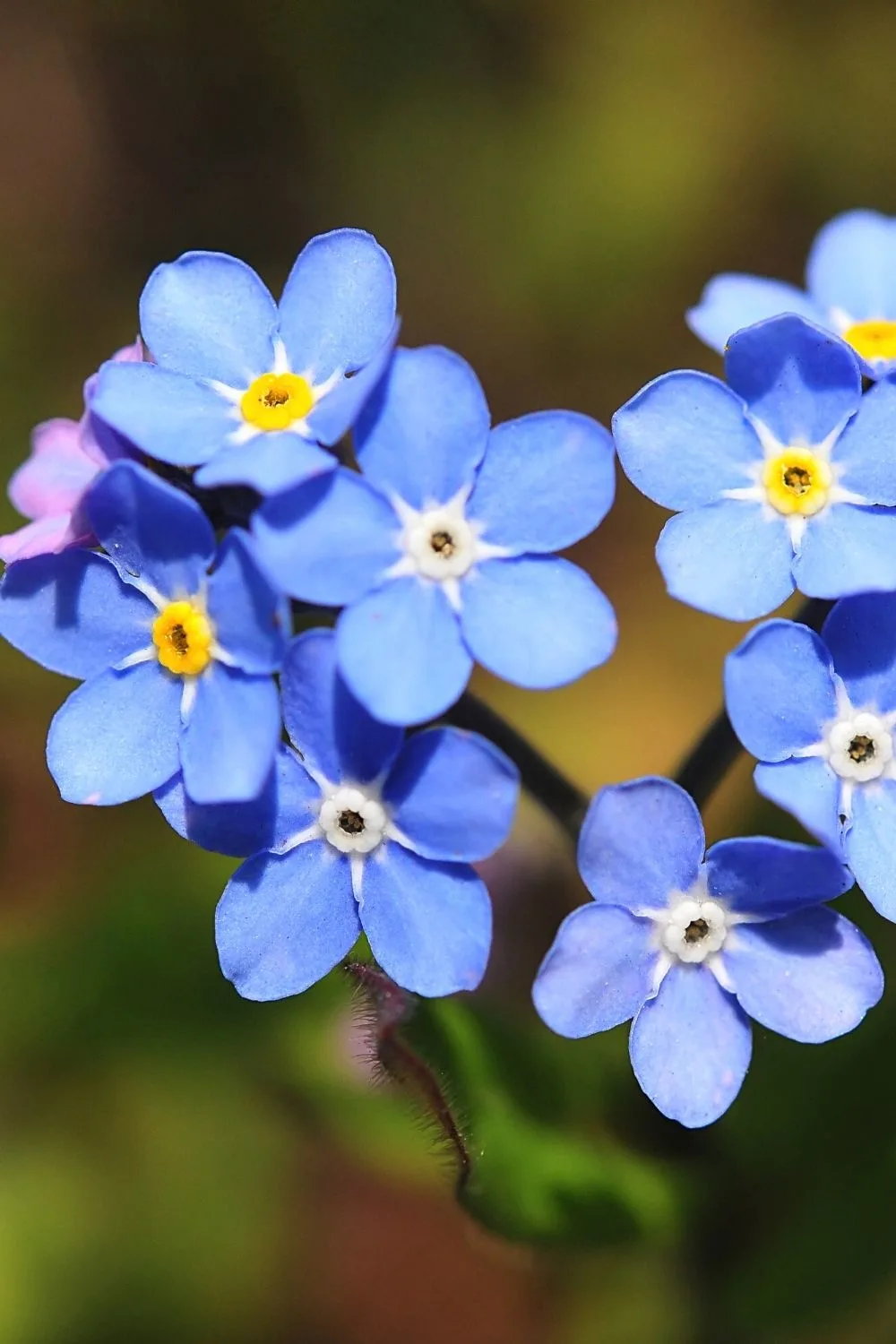
Forget Me Not, known for its captivating flowers, is a great addition to your north-facing balcony
Forget Me Not, which is quite famous for its captivating flowers, gives you not only one but two colors of flowers.
It is native to different regions of Europe and is certainly a delight to have in your backyard.
- Scientific name: Myosotis sylvatica
- Family: Boraginaceae
- Plant Type: Biennial; completes its life cycle in two years
- Kingdom: Plantae
- Temperature: Can withstand both cold as well as hot temperatures
- Fertilizer: Once with a general-purpose fertilizer
- pH: Could be mildly acidic to neutral and also slightly alkaline
- Soil: Moist yet well-drained
- Lighting: Full or partial
- Humidity: Intolerant to high levels of humidity
9. Coleus
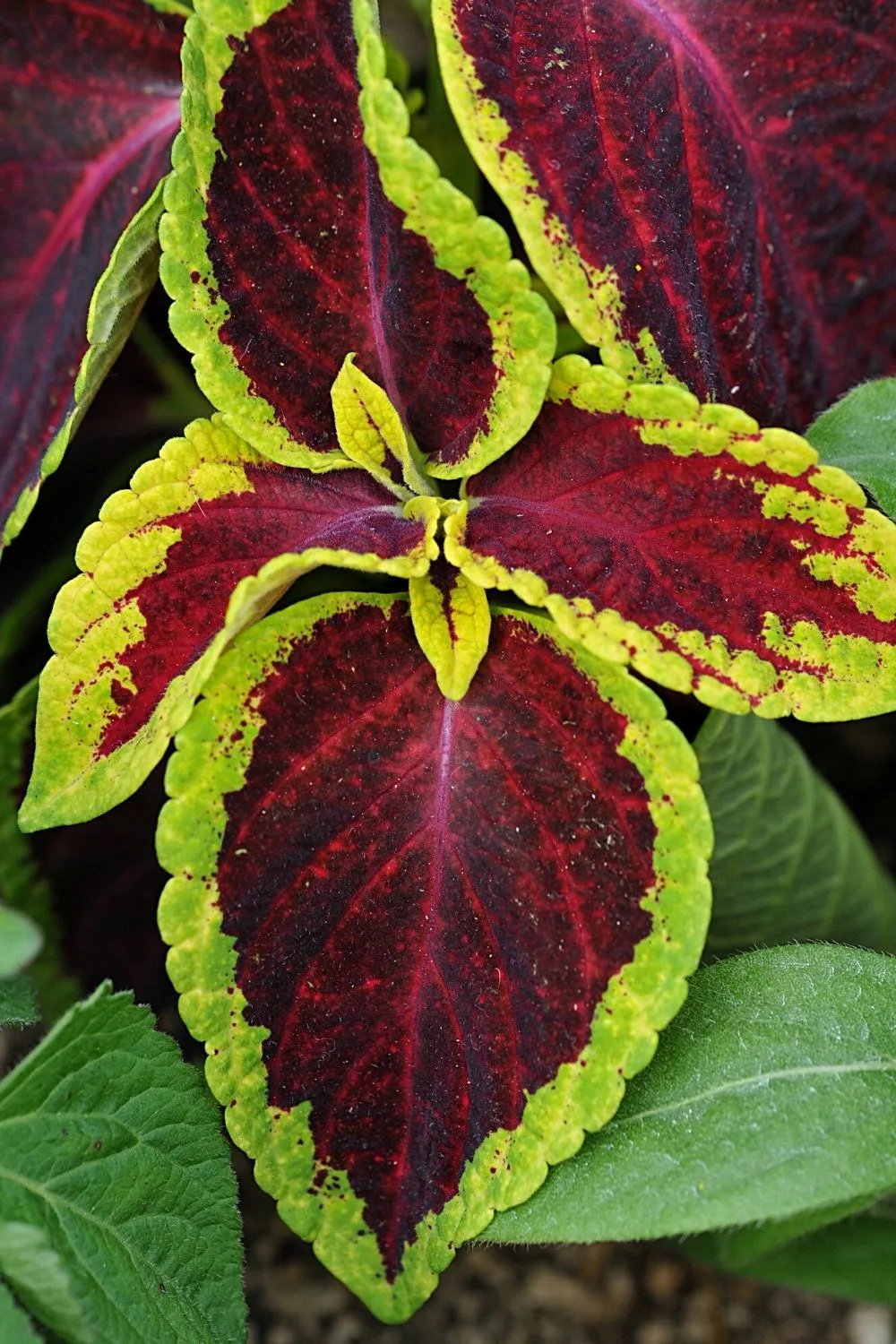
Known as a bedding plant, Coleus is another plant that you can grow in your north-facing balcony
Coleus is usually known as a bedding plant and produces very tiny flowers, either blue or white in color. Hence, it’s best to grow your Coleus bushy on your north-facing balcony.
It grows significantly in only one season if it is given proper nutrients and water.
It is also famous for its square stems and the presence of leaves exactly opposite each other.
- Scientific name: Plectranthus scutellarioides
- Family: Lamiaceae
- Plant Type: Herbaceous and Perennial
- Kingdom: Plantae
- Temperature: Intolerant to frost; bring the plant outdoors in spring
- Fertilizer: Add a slow-release fertilizer regularly
- pH: 6.0 to 7.0
- Soil: Should be loose soil, nicely drained, and rich in organic matter
- Lighting: Should thrive in partial to full shade
10. Caladiums
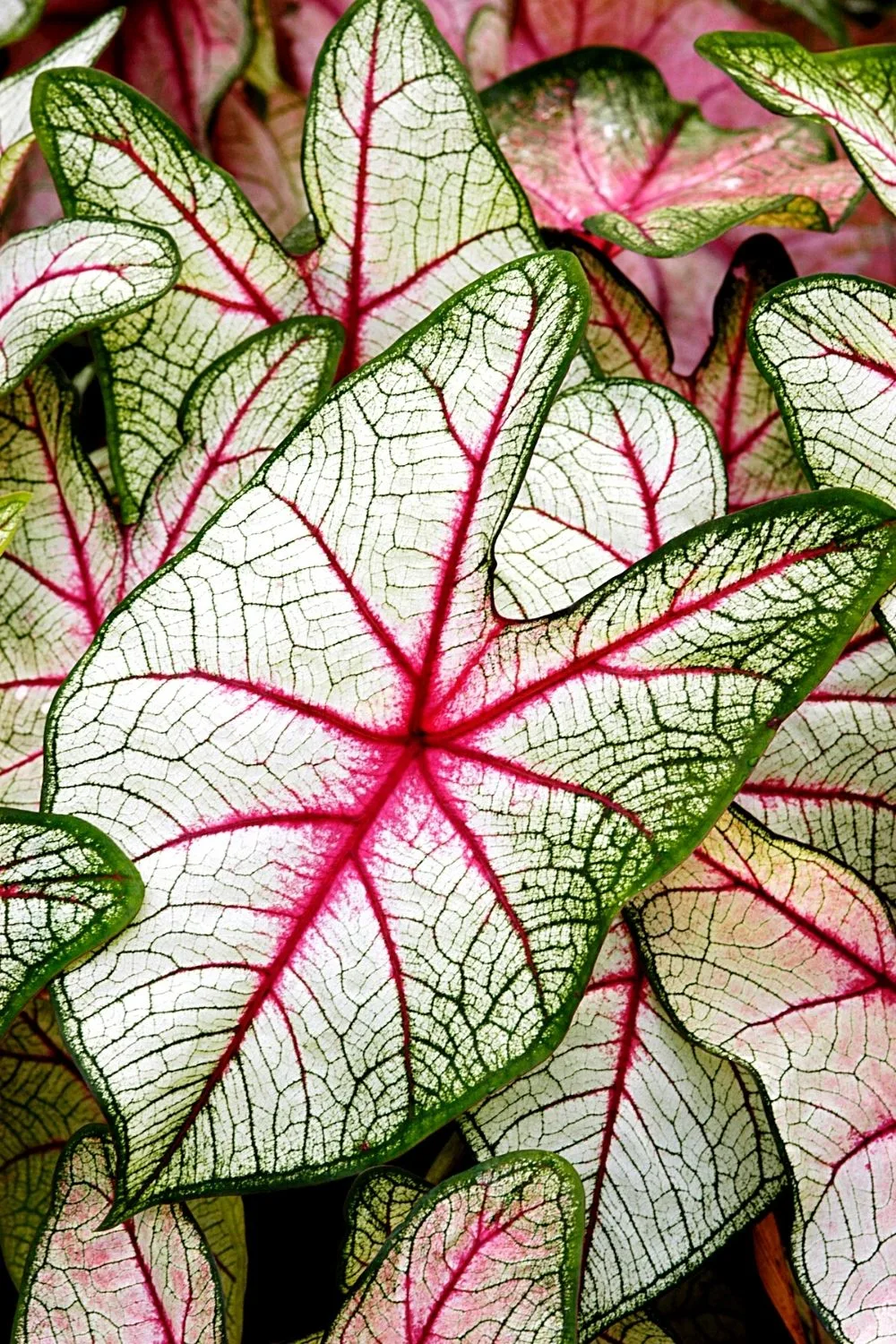
Caladium, known for its large heart-shaped leaves, can be grown on your north-facing balcony
Caladiums have an eye-catching appearance with their large heart-shaped leaves that are green from the outside and dark pink in the middle.
Absolute bliss to have on your balcony; this plant will survive in full as well as partial shade if you are keeping it outdoors.
- Scientific name: Caladium
- Family: Araceae
- Plant Type: Perennial; life cycle lasts for more than two years.
- Kingdom: Plantae
- Temperature: 70 – 75-degree Fahrenheit in the daytime and 60 – 65-degree Fahrenheit during the night.
- Fertilizer: slow-release pellets are recommended every two weeks
- pH: Slightly acidic to neutral
- Soil: Drained of excess water and rich in organic matter
- Lighting: Requires indirect light, and the leaves will burn if exposed to direct light.
11. Ferns
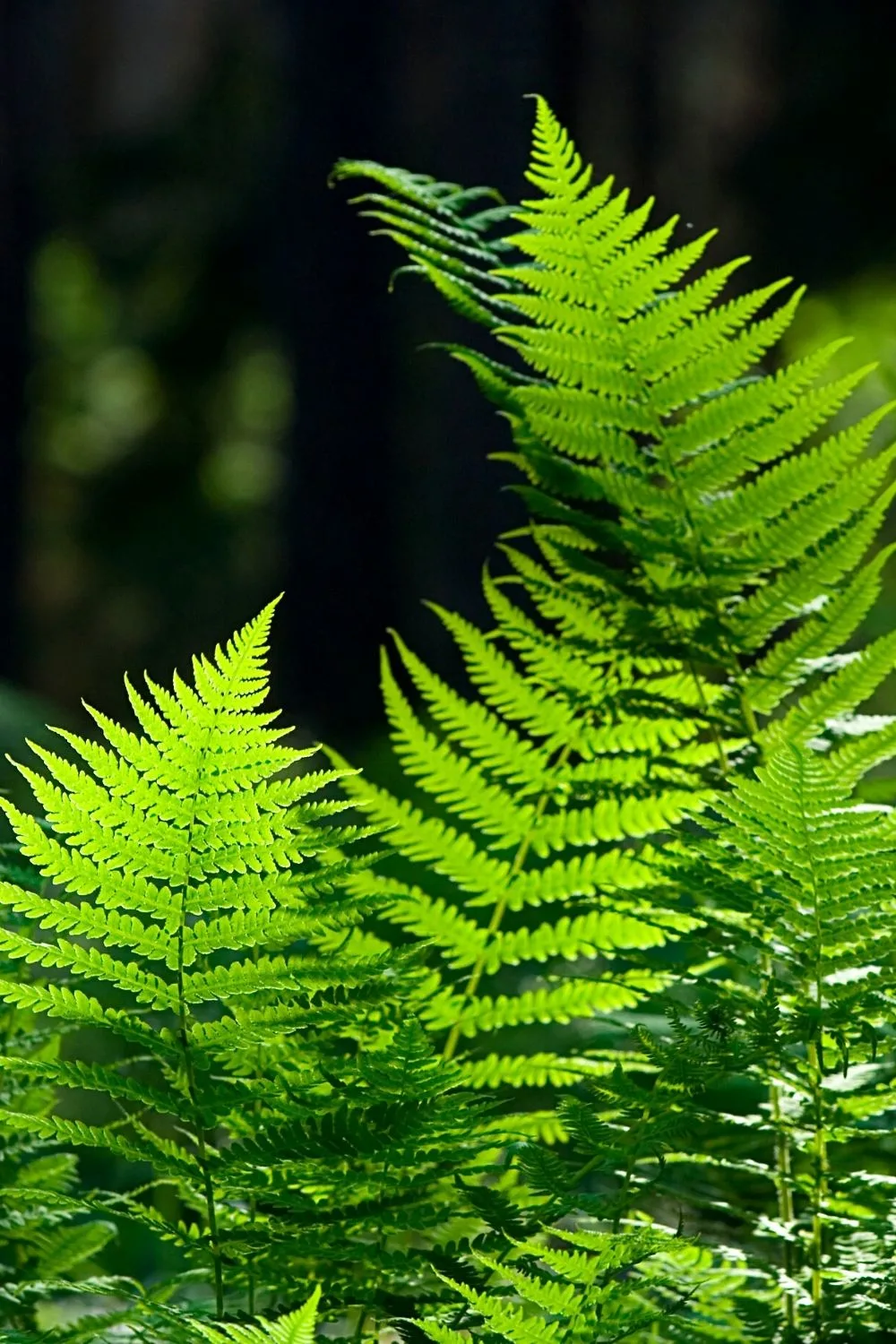
Ferns are low-maintenance plants that only require shady areas like north-facing balconies and water to grow
Fern is a low-maintenance plant that only requires a shady area of your garden and a proper watering schedule to prevent wilting, crisping, or other signs of damage.
Another reason that they are low maintenance is that these plants are pet-friendly, so you do not have to worry about keeping them on high shelves inside your house.
- Scientific name: Polypodiopsida
- Family: Fern Family
- Plant Type: Perennial
- Kingdom: Plantae
- Fertilizer: Cover with compost every two weeks
- pH: moderately acidic
- Soil: Should be sandy and well-drained
- Lighting: Will survive in indirect light
- Humidity: Prefers high levels of humidity for lust green leaves
12. English Ivy
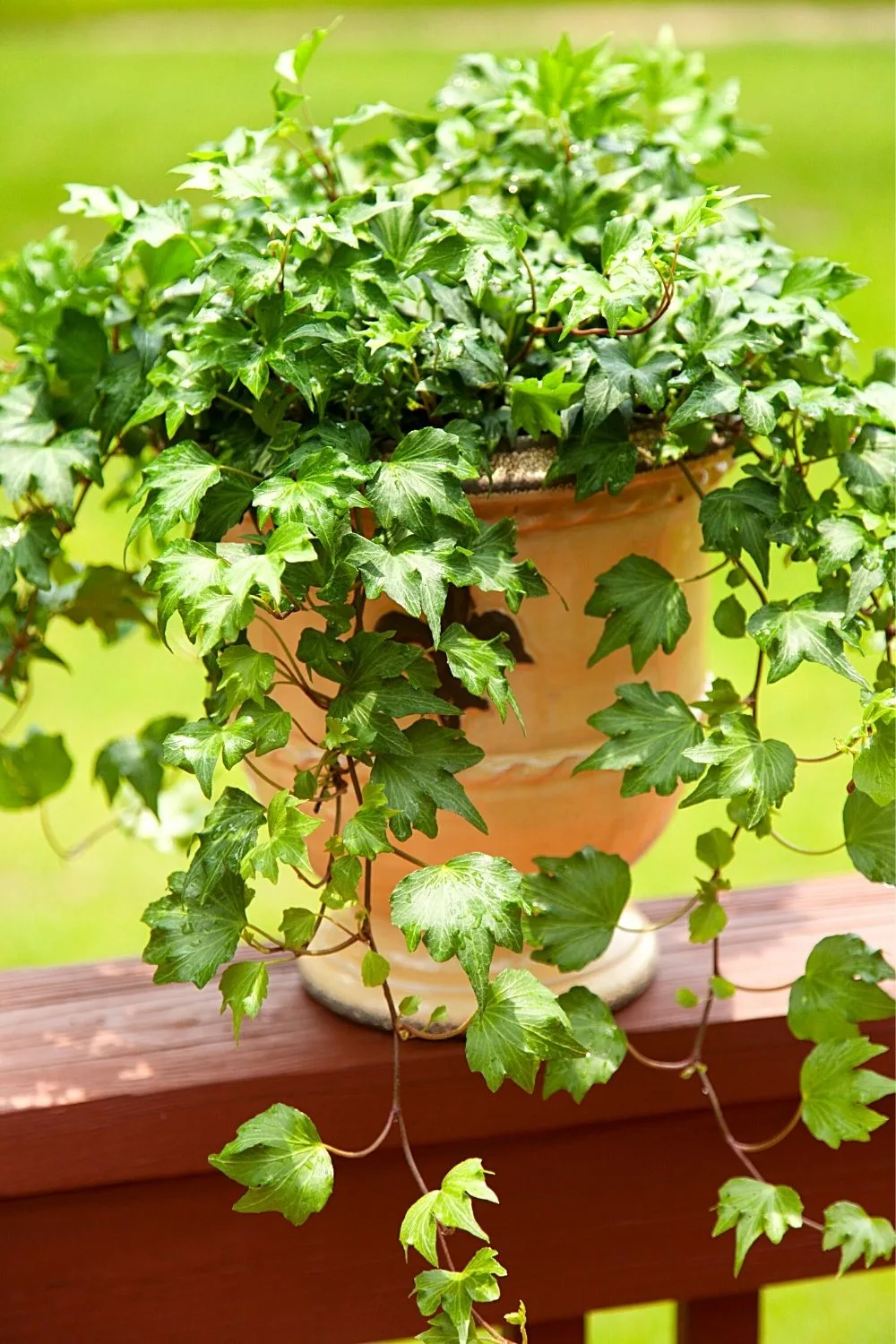
English Ivy, though you can place it on your north facing balcony, should be kept away from children as it’s a toxic plant
This plant is a perennial, which means that its life cycle usually lasts for more than two years. This feature adds to its long-lasting nature.
Grown for its large green leaves, it is best if you plant it in spring so that it can grow at a significant rate.
However, it is toxic to children and should be kept away from them.
- Scientific name: Hedera Helix
- Family: Araliaceous
- Plant Type: Evergreen perennial growing in vines or on railings
- Kingdom: Plantae
- Temperature: Ideal temperature is between 70 -90 degrees Fahrenheit
- Fertilizer: Use 20-20-20 fertilizer every two weeks
- pH: Neutral or sometimes slightly alkaline
- Soil: Fertile soil is always ideal, it should be moist and rich
- Lighting: Partial shade to full shade
13. Spinach

Spinach is another great plant you can grow on your north facing balcony
Spring always reminds us of one thing, and that is spinach. Perhaps it is because of its great nutritional benefits and excessive use in our favorite kinds of pasta and salads.
Also, it is one of those plants that will do great on your north-facing balcony.
- Scientific name: Spinacia Oleracea
- Family: Oleracea
- Kingdom: Plantae
- Temperature: intolerant of frost
- Fertilizer: requires fertilizers high in nitrogen to ensure the growth of leaves
- pH: 6.5 to 6.8; neutral to acidic
- Soil: loamy and sandy
- Lighting: requires indirect bright light to grow; will die in frost
14. Hosta
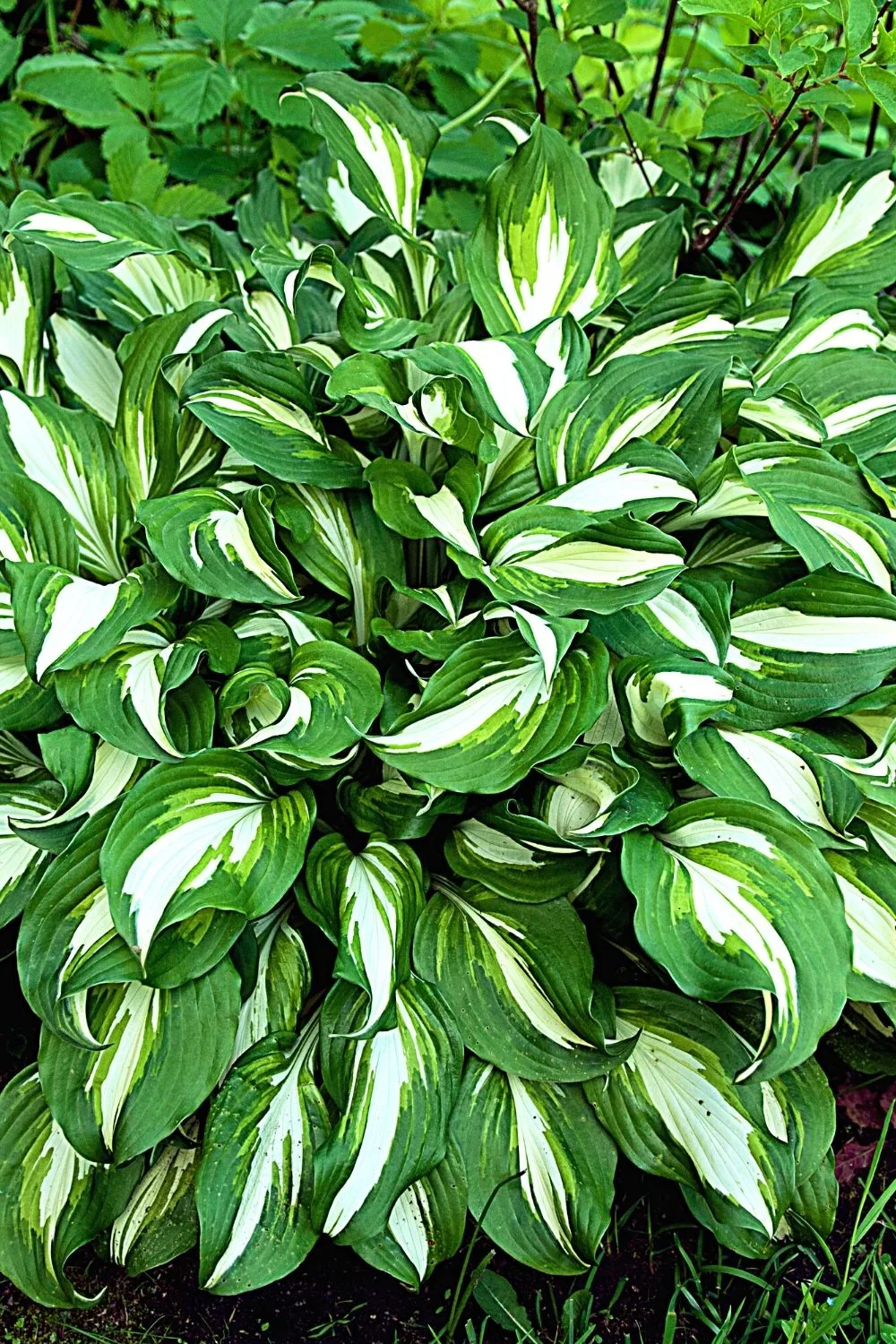
Hosta is a popular USA plant grown in households as it thrives in shady areas like north facing balconies
Hosta plant is one of those plants in the USA that is very common in almost every household because it survives in the shade.
There are different varieties of this plant, the lowest being the small variety which takes about three to five years to reach its maximum height.
So, better learn how to make your Hosta grow bigger so it can thrive and make a statement on your north-facing balcony.
- Scientific name: Hosta
- Family: Asparagusate
- Plant Type: Herbaceous perennial
- Kingdom: Plantae
- Temperature: location should be protected from strong winds; it thrives in almost every temperature
- Fertilizer: Add a generous layer of compost
- pH: 6.0 to 6.5; slightly acidic
- Soil: should be rich and fertile
- Lighting: partial or full shade
15. Asian Greens
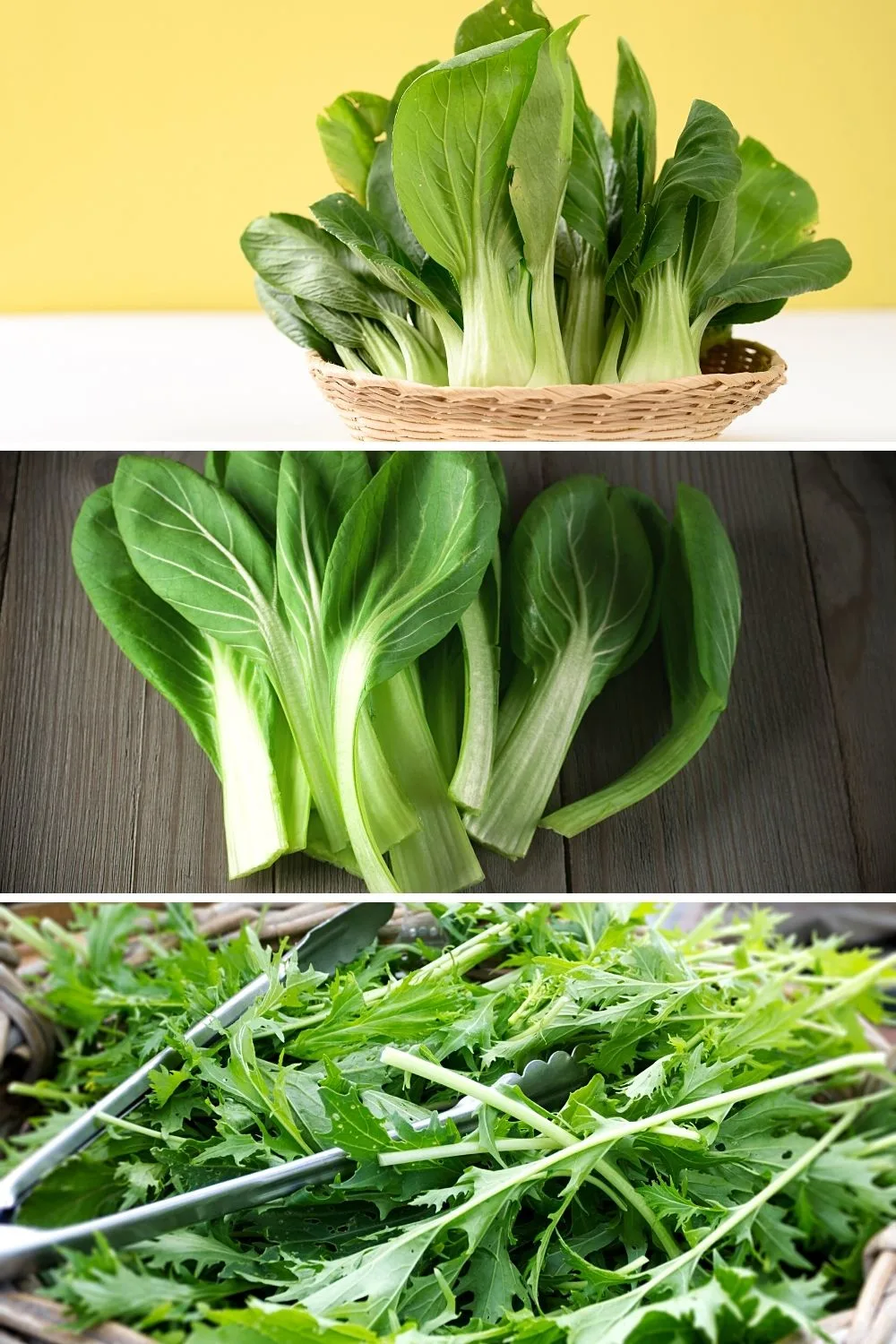
Asian Greens can survive to some extent in shady areas like north-facing balconies
Asian greens, which include Bok Choy, Tatsoi, or Mizuna can easily be grown on a north-facing balcony as they can tolerate shade to some extent and will not burn in the absence of sunlight.
The best time to plant these vegetable greens is during spring and fall.
- Scientific name: Brassica Oleracea
- Family: Mustard family
- Plant Type: Biennial Vegetable
- Kingdom: Plantae
- Temperature: Intolerant to intense frost
- Fertilizer: Use a slow-release fertilizer every four to six weeks
- pH: Slightly acidic (6.5 to 6.8)
- Soil: Moist, rich, and loamy soil
- Lighting: Will grow in part share and part sunlight
16. Lettuce
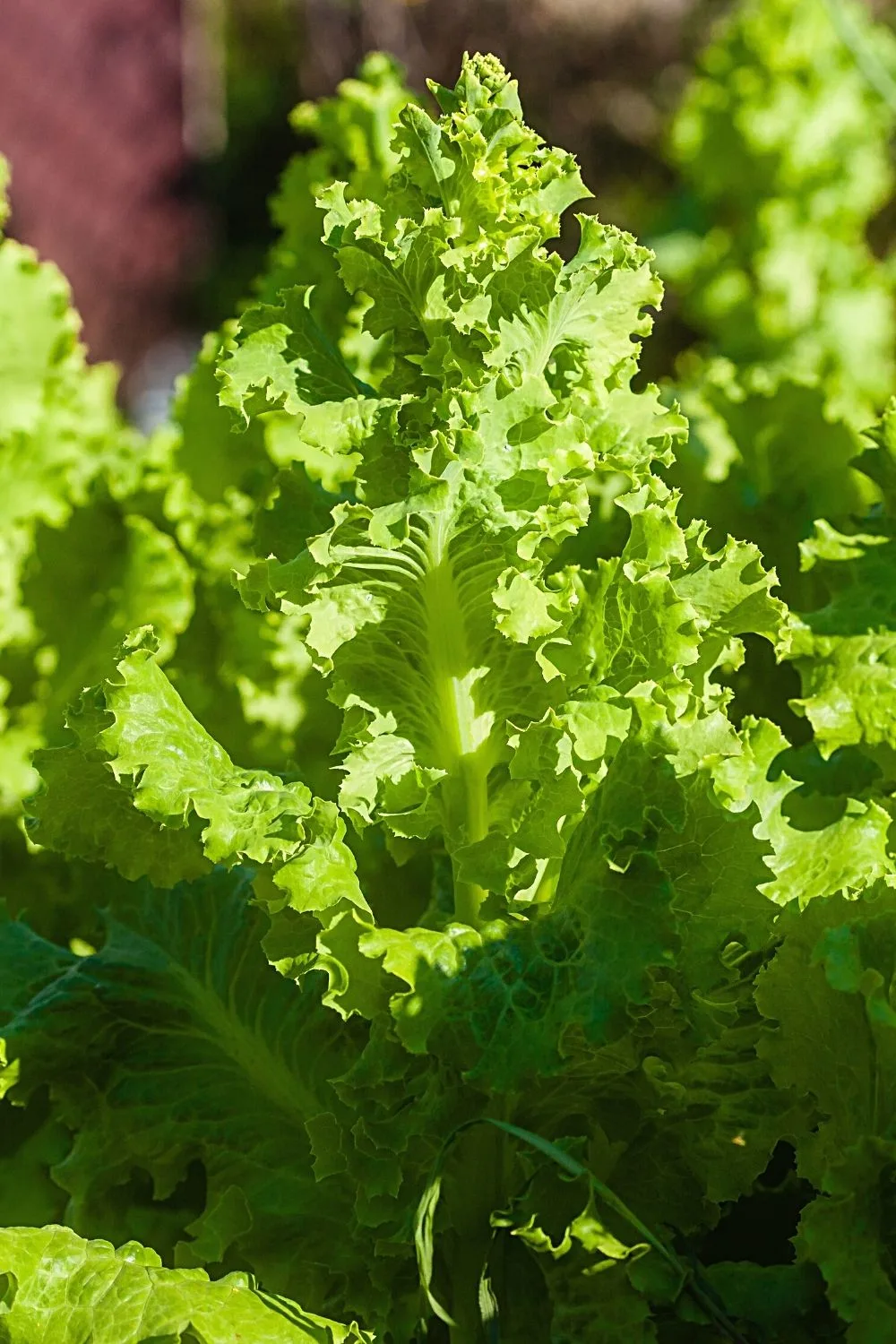
Lettuce is another vegetable that you can easily grow on north-facing balconies
Lettuce, a plant that comes under green vegetables, is grown in many different forms, colors, and sizes.
There is a soft and delicate lettuce plant, whereas there is also a crisp and bright lettuce plant.
- Scientific name: Lactuca Sativa
- Family: Asteraceae
- Plant Type: Annual vegetable
- Kingdom: Plantae
- Temperature: Use a nitrogen-rich fertilizer every three weeks
- Fertilizer: between 45 to 70 degrees Fahrenheit
- pH: Acidic to neutral
- Soil: Well-drained and loamy soil
- Lighting: Survives in full or partial sun
17. Parsley
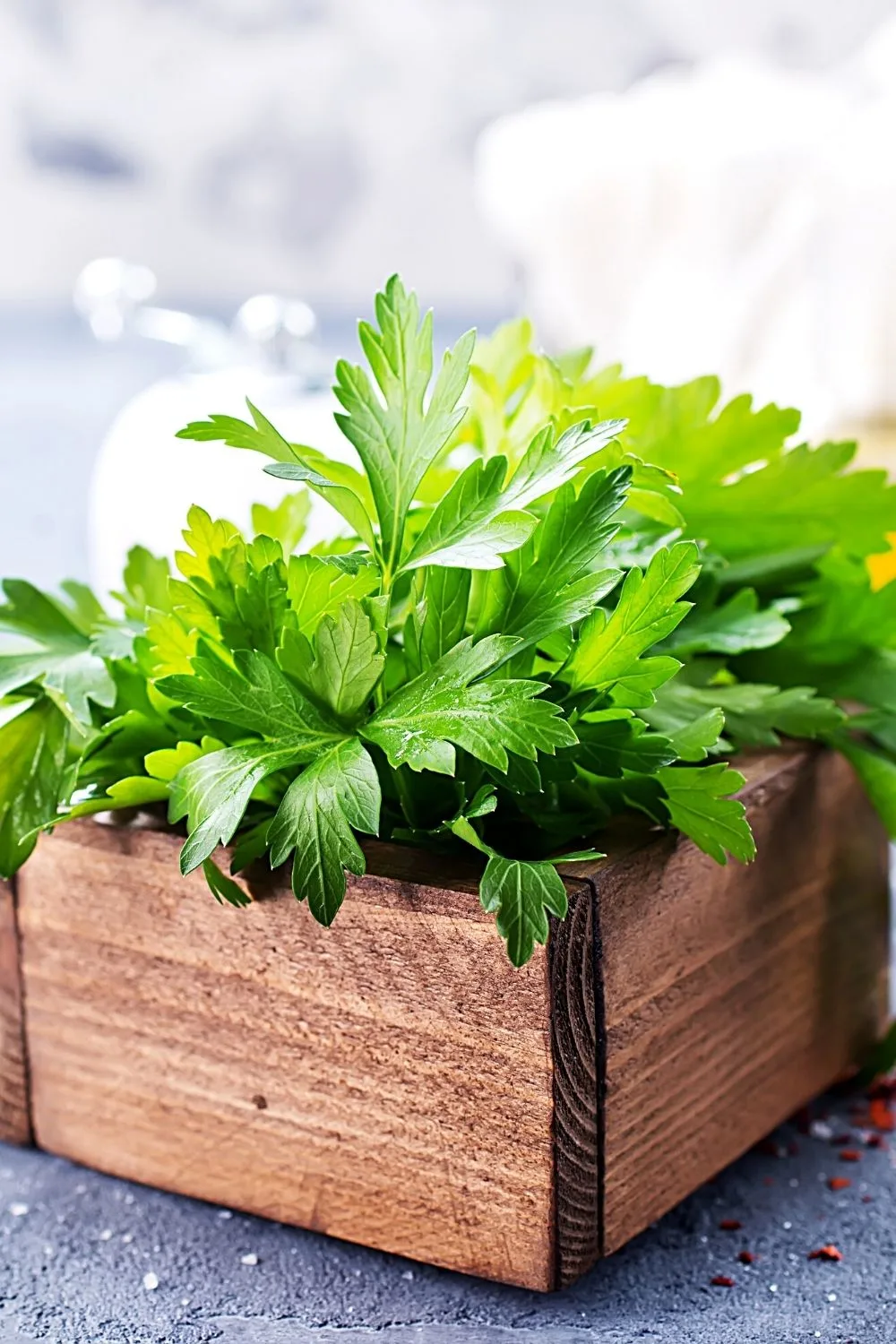
Parsley is known for its curly, triangular leaves and can grow on a north-facing balcony
Parsley is very commonly confused with cilantro. It does have very distinct features from cilantro.
Unlike cilantro, parsley has curly leaves, triangular in shape. Also, parsley has a very distinguished taste as compared to cilantro.
- Scientific name: Petroselinum Crispum
- Family: Apiaceae
- Plant Type: Biennial and Annual
- Kingdom: Plantae
- Temperature: Roughly between 50 to 70 degrees Fahrenheit
- Fertilizer: Half strength diluted fertilizer every two weeks
- pH: Acidic to neutral
- Soil: Loamy and moist
- Lighting: Thrives in full sun
18. Mint
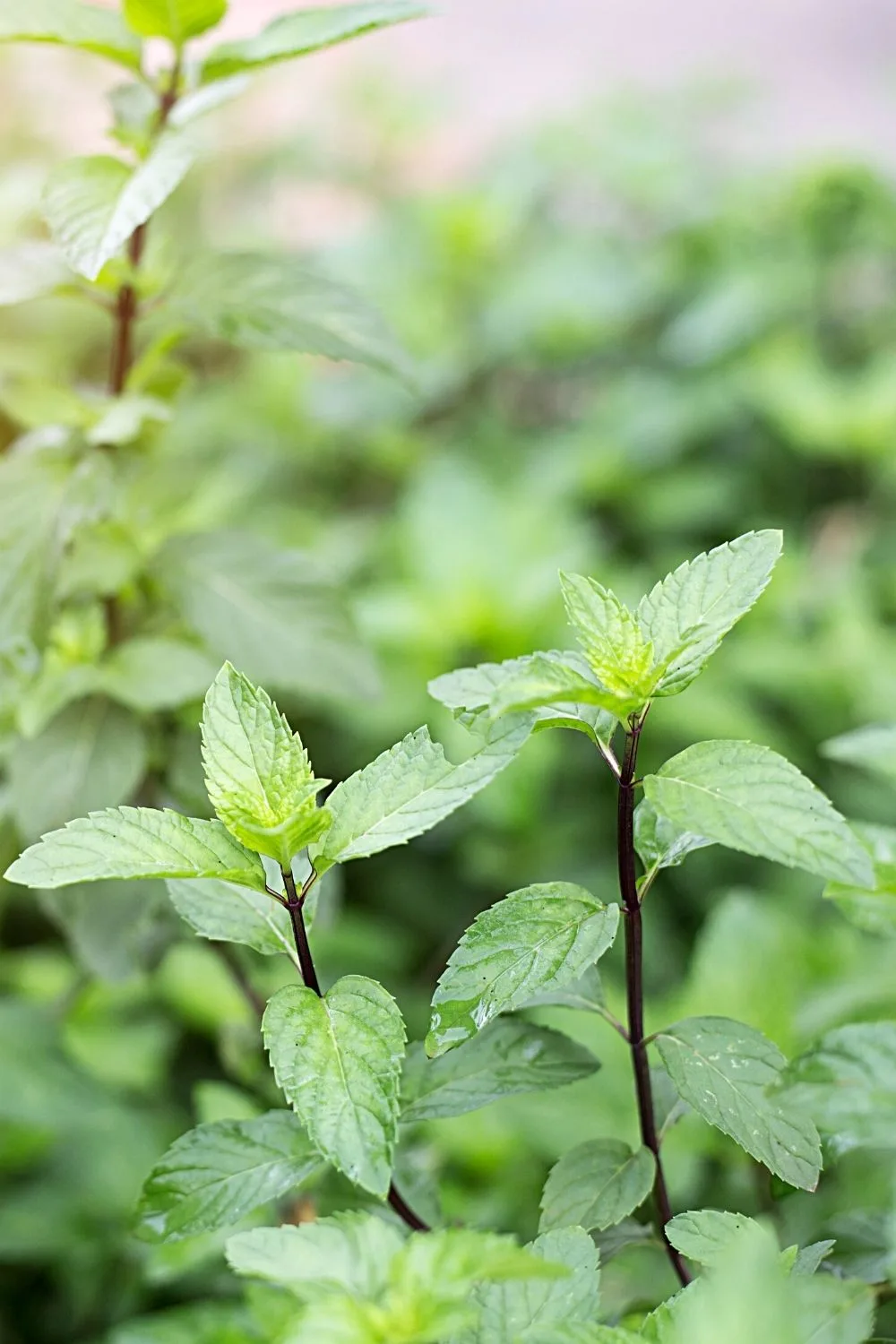
Mint is another herb that you can grow in shady areas like the north-facing balcony
Mint, a great herb according to nutritional aspects and a lovely plant for your balcony can tolerate a great level of shade.
However, it will still require three to four hours of sunlight in a day. Therefore, it is best to keep it in a spot where it can get a little bit of the morning sun, or else your mint will die.
- Scientific name: Mentha spp
- Family: Lamiaceae
- Plant Type: perennial herb
- Kingdom: Plantae
- Temperature: very adaptable to changes in temperature
- Fertilizer: No such need for fertilizing
- pH: Acidic to neutral
- Soil: Drained of excess water
- Lighting: can survive in partial shade
19. Lilyturf
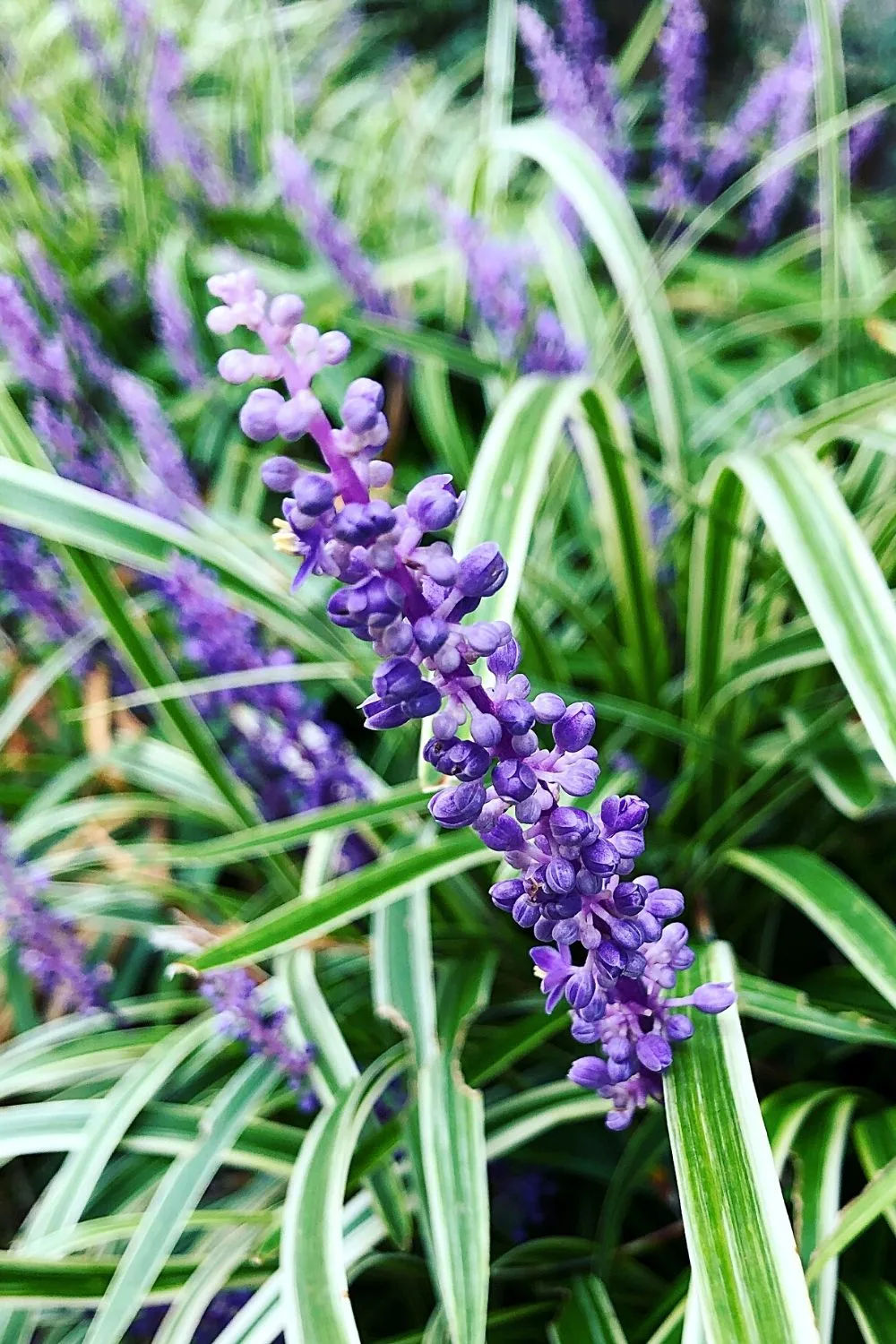
Lilyturf is another plant you can grow on your north-facing balcony because it can tolerate partial shade
Belonging to the asparagus family, lilyturf is a great plant for your north-facing balcony due to its tolerance for partial shade.
- Scientific name: Liriope spicata
- Family: Asparagus Family
- Plant Type: Perennial that grows 9 to 18 inches
- Kingdom: Plantae
- Temperature: USDA growing zones are 4 to 10
- Fertilizer: Slow-release fertilizer every two weeks
- pH: acidic to neutral
- Soil: should have moderate moisture and well-enriched
- Lighting: Survives in part shade
20. Primroses
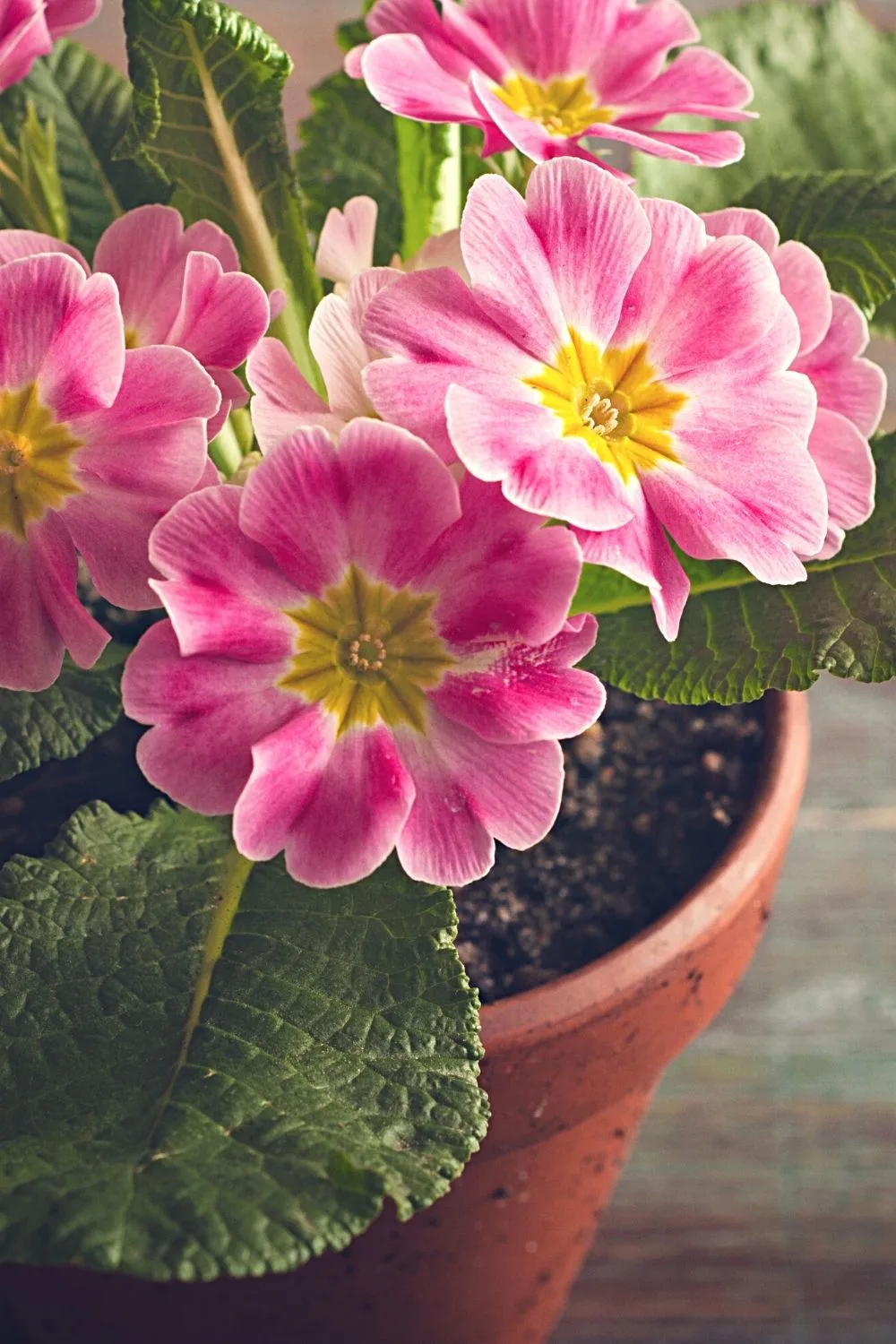
Primroses are known for its small colorful flowers that you can grow on your north-facing balcony
Primroses have more than around 500 species and are widely known for their small beautiful flowers.
- Scientific name: Primula spp.
- Family: Primulaceae
- Plant Type: Perennial plant
- Kingdom: Plantae
- Temperature: Hardiness zones are 5 to 7
- Fertilizer: Feed regularly with a mild fertilizer
- pH: Acidic soil pH
- Soil: Soil should be moderately drained
- Lighting: survives in partial shade
21. Bugleweeds
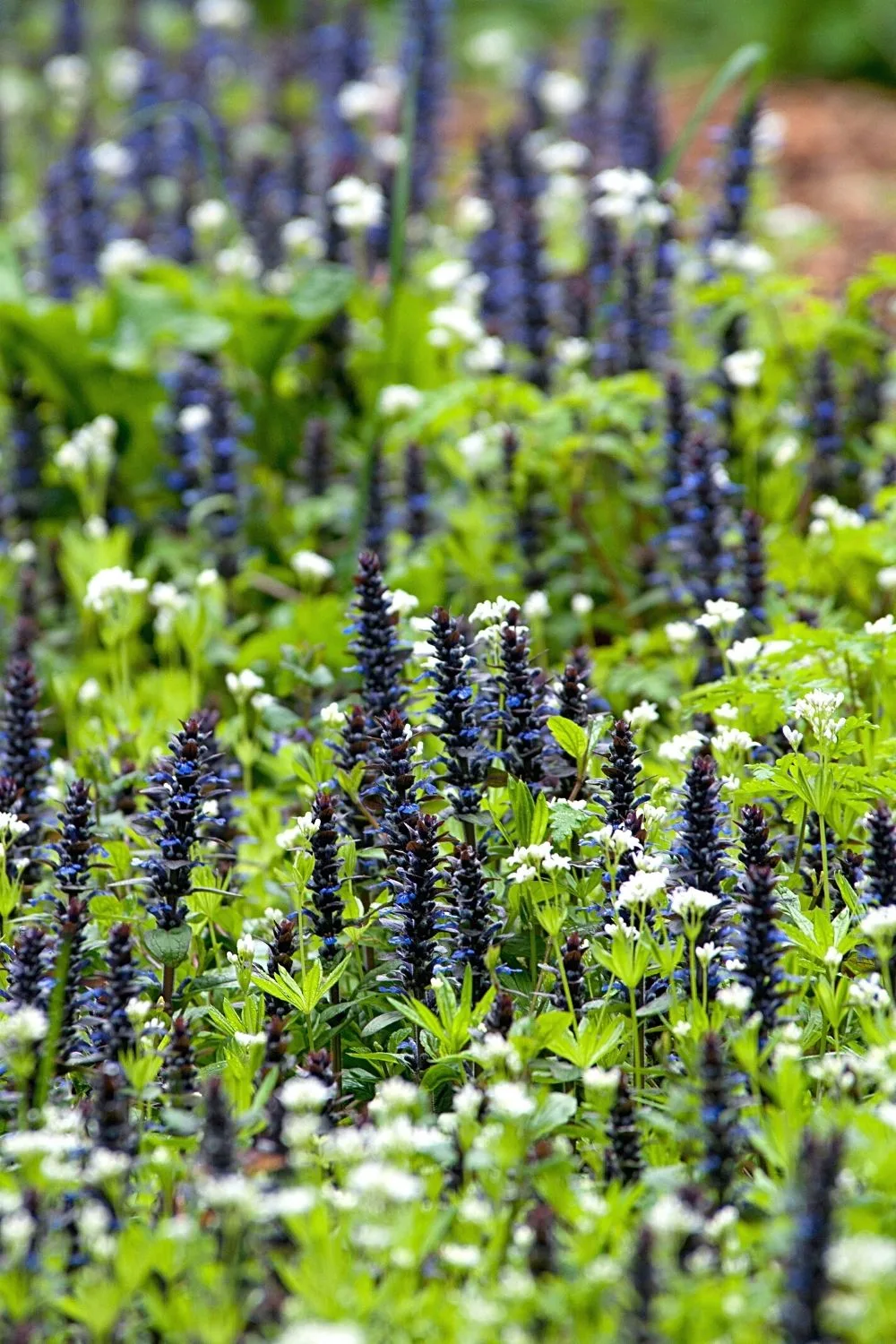
Bugleweed is a resilient plant that you can grow on your north-facing window
Bugleweeds, a highly resistant plant, require minimal care and assistance and give great results in return.
This plant bears wonderful blue flowers in the month of May and June.
- Scientific name: Ajuga Reptans
- Family:
- Plant Type:
- Kingdom: Plantae
- Temperature: USDA growing zones are 3 to 10
- Fertilizer: 2-2-2 fertilizer every month
- pH: Neutral
- Soil: medium moisture soil
- Lighting: survives in light as well as shade
22. Succulents
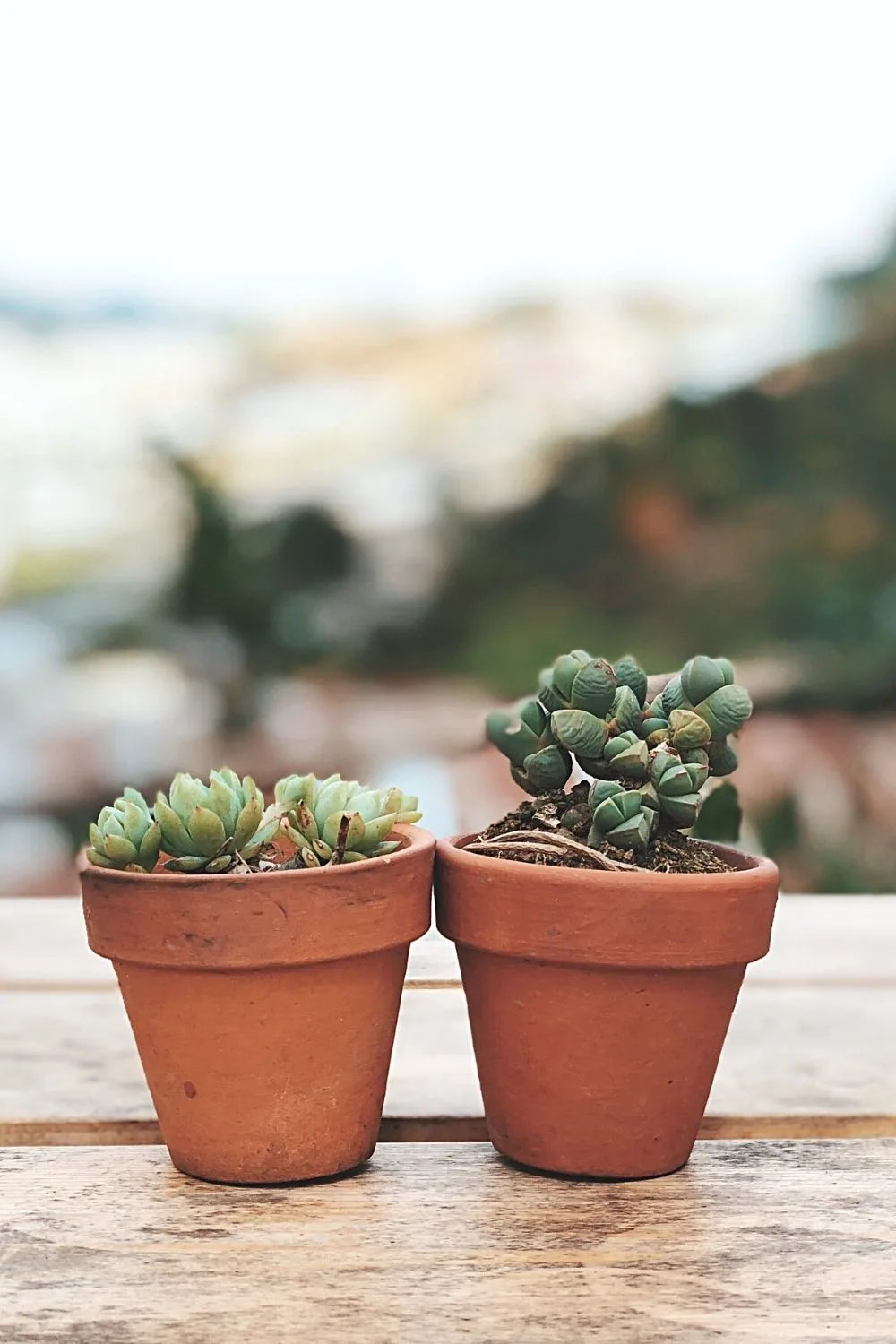
Succulents, known for their low-maintenance nature, is a great way to spruce up your north-facing balcony
Succulent plants are known greatly for putting whatever they can get to maximum usage, be it water or sunlight.
Some of the most common succulent plants include cacti, agave, and crassula.
- Scientific name: Cacti
- Family: Cactaceae
- Kingdom: Plantae
- Temperature: USDA growing zone is 9
- Fertilizer: slow-release fertilizer for optimum growth
- pH: pH of succulent plant soil is slightly acidic that varies from 5.5 to 6.5.
- Soil: succulents should be potted in slightly chunky and well-draining soil.
- Lighting: part sun and part shade
23. Yew
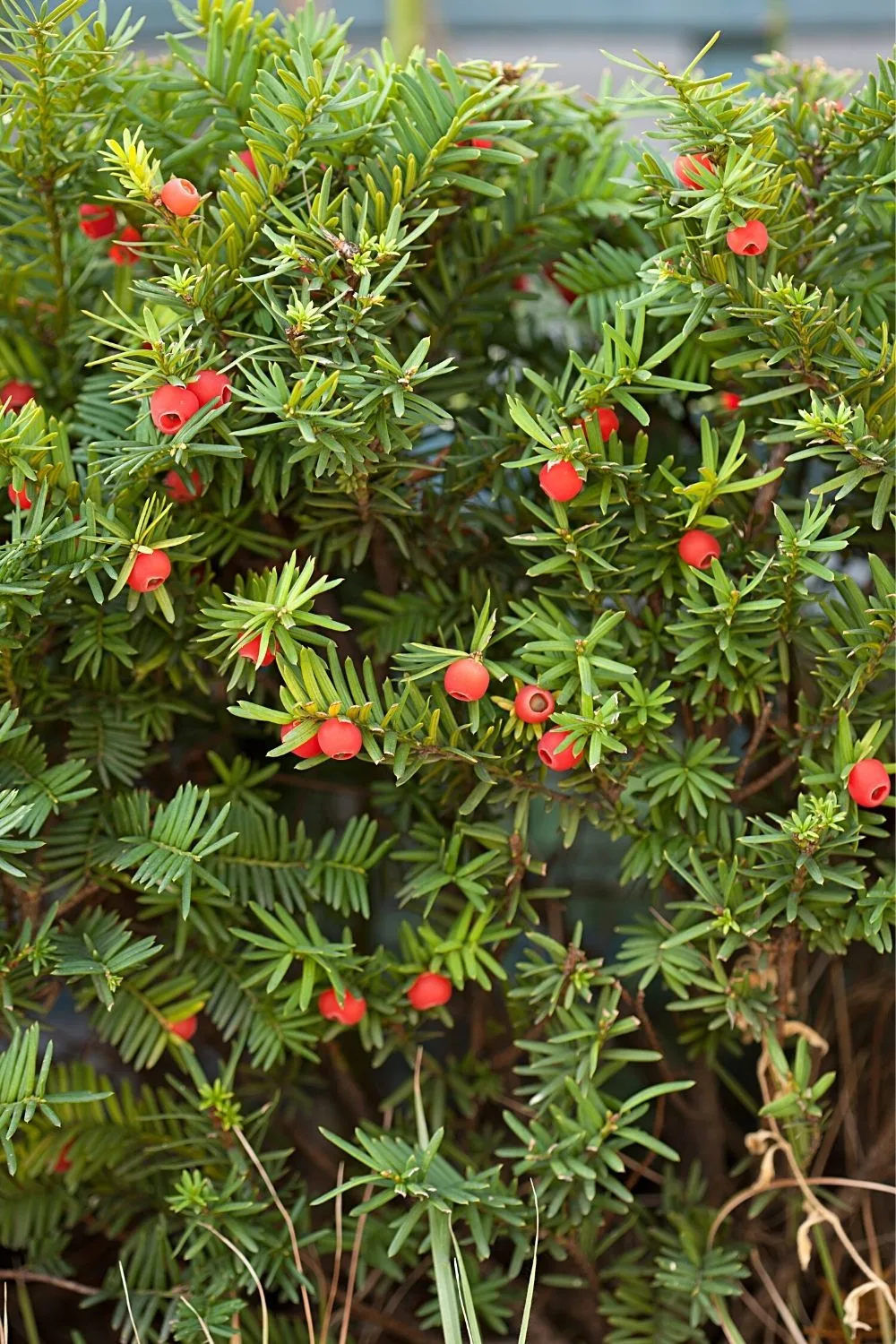
Yew is a non-flowering plant that you can grow on your north-facing balcony
Yew is a non-flowering plant that you can grow successfully on your north-facing balcony.
It can grow from a range of 2 feet to 20 feet in height and produces needle-like green long leaves.
- Scientific name: Taxus spp.
- Family: Taxaceae
- Plant Type: Perennial
- Kingdom: Plantae
- Temperature: Good tolerance for changes in temperature
- Fertilizer: Mild fertilizer once a month
- pH: slightly acidic
- Soil: Enriched soil should be drained of excess water.
- Lighting: Full sun to part shade
24. Flowering Quince
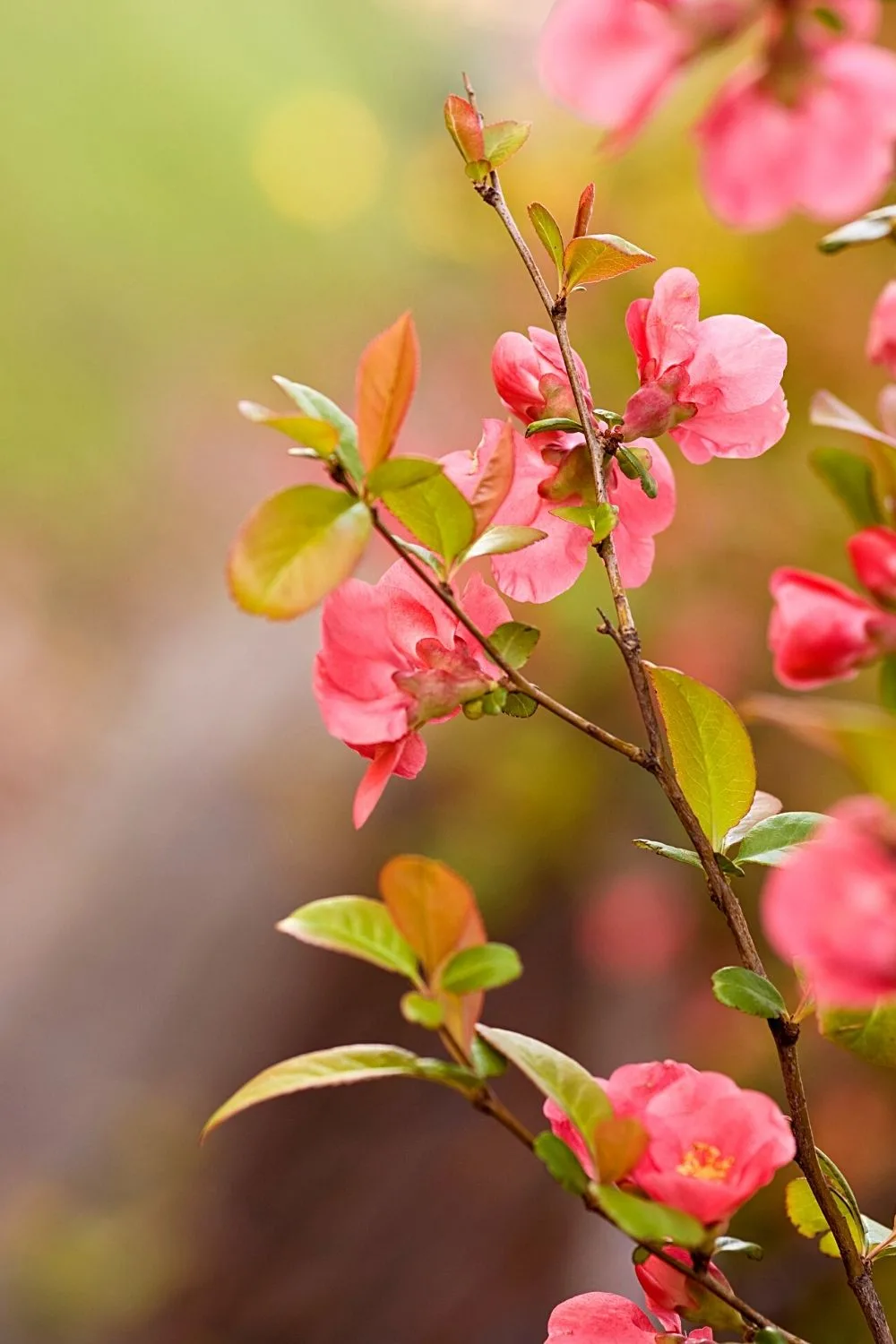
Flowering Quince can tolerate any type of soil, hence, you can grow it on your north-facing balcony
A great advantage of growing flowering quince is that it can tolerate almost any type of soil, which makes it very resilient and resistant to damage.
This plant produces bright white and scarlet color flowers in March and April.
- Scientific name: Chaenomeles speciosa
- Plant Type: Biennial plant
- Kingdom: Plantae
- Temperature: USDA growing zones are 5 to 9
- Fertilizer: halt strength fertilizer every two weeks
- pH: neutral pH
- Soil: This plant needs medium moisture and well-drained soil. However, it can still tolerate dry soil.
- Lighting: Full sun to part shade
25. Flowering Dogwood
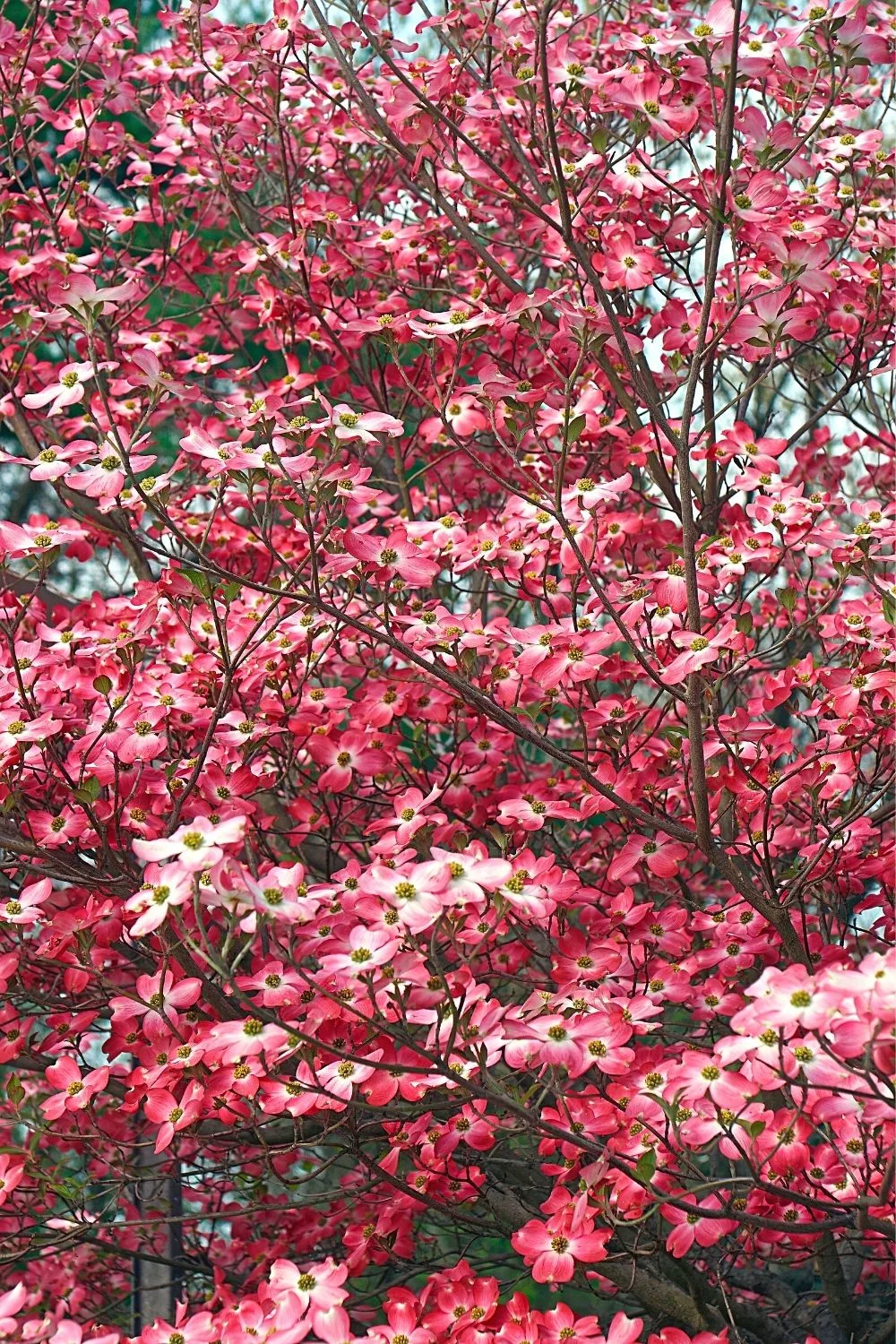
Flowering Dogwood produces small pink flowers that attract birds on your north-facing balconies
Flowering dogwood grows to a height of 20 to 25 feet and produces small pink flowers that also attract a great number of birds.
However, this particular plant is highly susceptible to a disease called dogwood anthracnose. Therefore, it should be dealt with caution.
- Scientific name: Cronus Florida
- Plant Type: Biennial
- Kingdom: Plantae
- Temperature: USDA growing zones are 5a to 9a
- Fertilizer: medium strength fertilizer biweekly
- pH: slightly acidic
- Soil: medium moisture and well enriched
- Lighting: can survive in sunlight as well as part shade
26. Canadian Hemlock
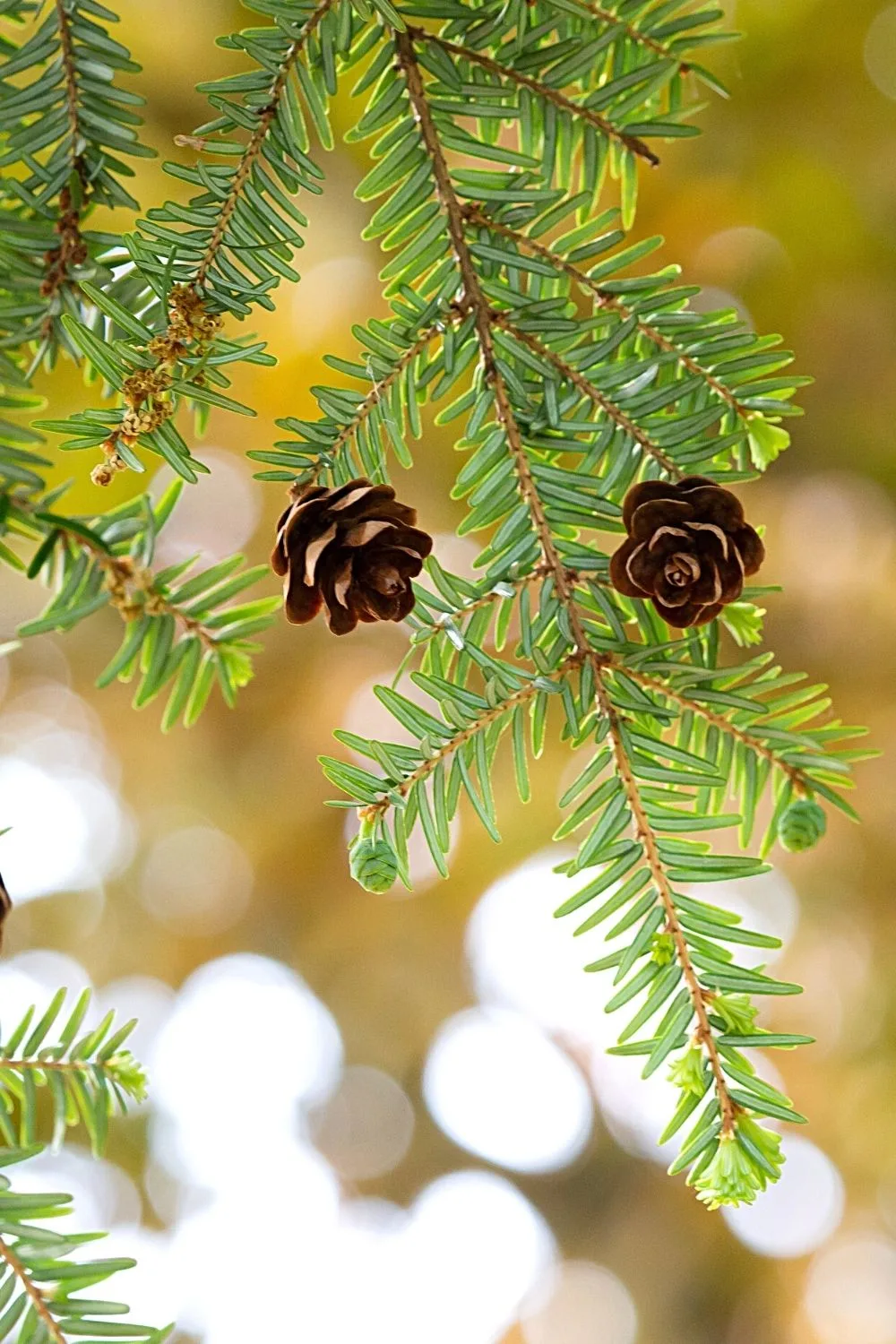
Canadian Hemlock, though a forest tree, can be grown on your north-facing balcony, making sure to prune them properly
Best known as forest trees, Canadian hemlock will do wonders if you provide them with the proper conditions to grow in the initial phase of their development.
Prune these plants regularly to prevent them from any unpleasant infection.
- Scientific name: Tsuga Canadensis
- Plant Type: Biennial
- Kingdom: Plantae
- Temperature: USDA growing zones are 3a to 7a
- Fertilizer: slow-release fertilizer every two weeks
- pH: slightly acidic pH
- Soil: well-drained
- Lighting: Can survive in part shade as well as full shade
27. Spotted Dead Nettle

Spotted Dead Nettle thrives in shade, hence, it is a great addition to your north-facing balcony
Spotted dead nettle is a perennial plant that loves to be kept in the shade for almost its entire life.
It grows rapidly and reaches a height of about 9 inches within no time.
This plant is also drought tolerant, which makes it a perfect choice for you to plant on your north-facing balcony.
- Scientific name: Lamium maculatum
- Plant Type: Perennial plant
- Kingdom: Plantae
- Temperature: USDA growing zones are 3a to 8a
- Fertilizer: slow-release fertilizer to be used once every month; however, will also work if not fertilized for a long time
- pH: neutral pH
- Soil: medium moisture soil
- Lighting: can survive in full shade
28. Trout Lily
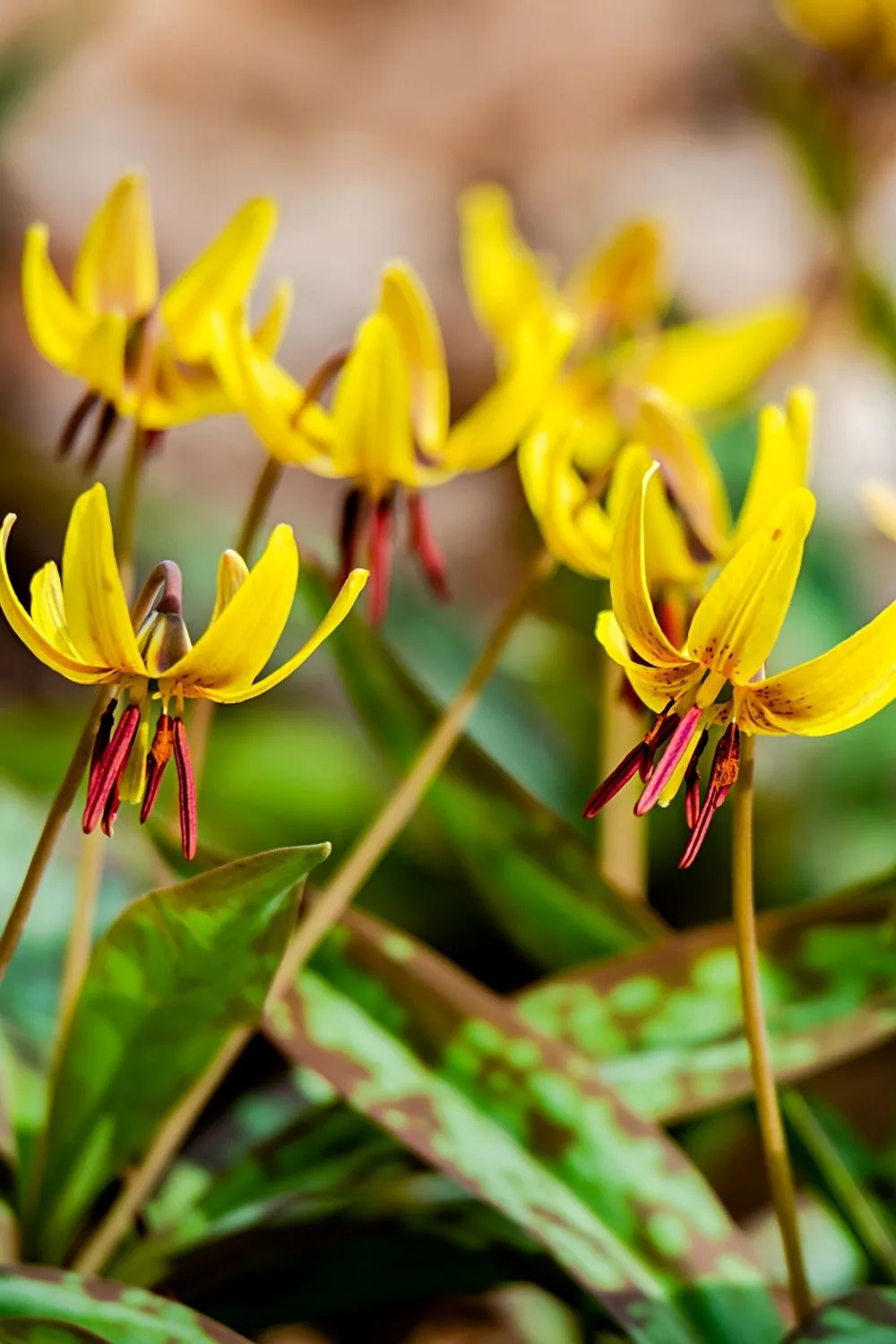
Trout Lily grows bright, yellow flowers that can add color to your north-facing balcony
Trout lily blooms greatly in the season of spring and reaches a height of 6 inches.
It produces small bright flowers that are yellow in color.
- Scientific name: Erythronium Americanum
- Plant Type: Perennial
- Kingdom: Plantae
- Temperature: USDA growing zones are 3a to 8a
- Fertilizer: slow-release fertilizer once every month
- pH: slight acidic soil
- Soil: well enriched and drained of excess water
- Lighting: Can survive in full shade.
29. Foxglove
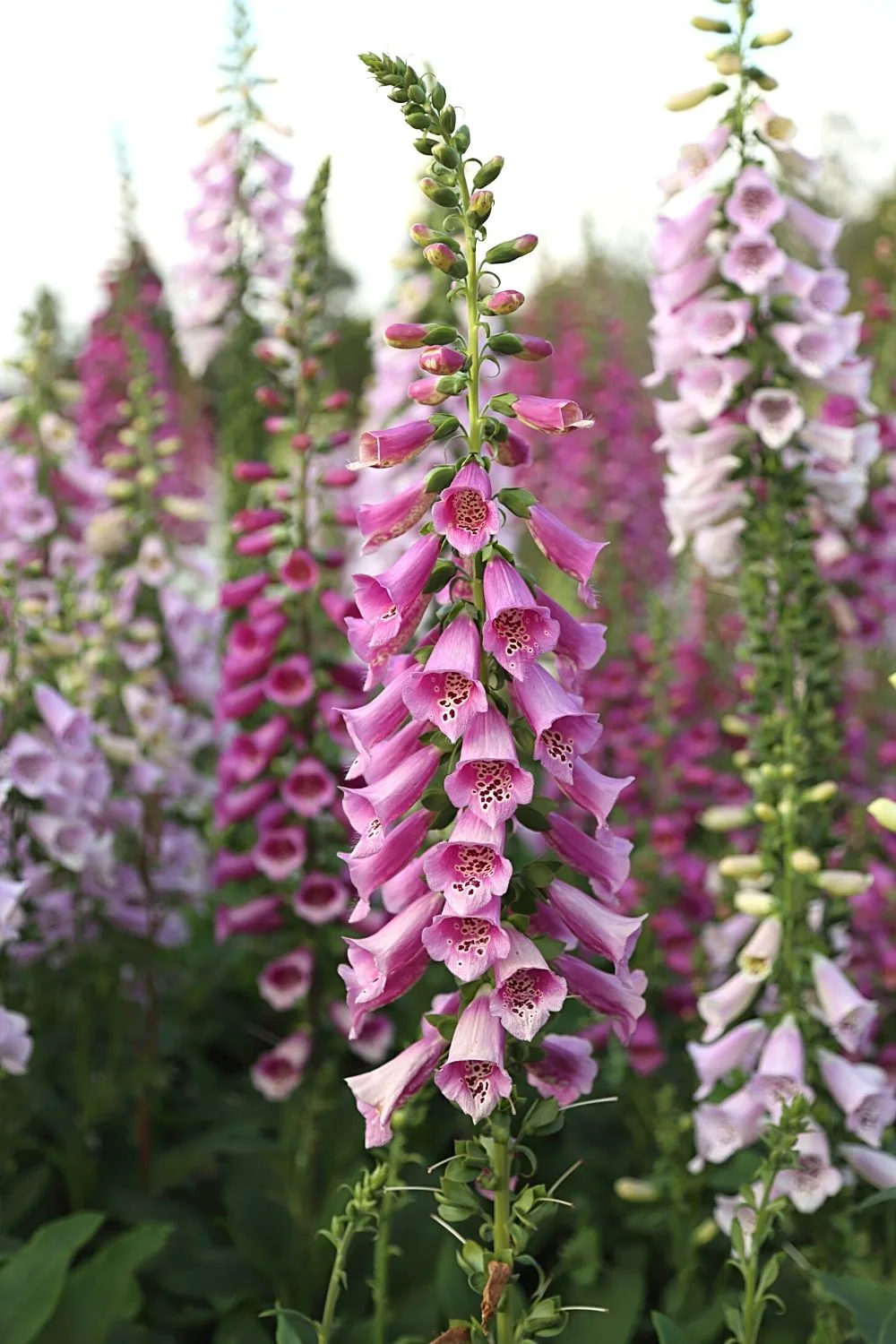
Foxglove grows bell-shaped flowers that are great addition to your north-facing balcony
This plant produces bell-shaped flowers in purple, pink, and white colors.
- Scientific name: Digitalis Purpurea
- Plant Type: Biennial in some locations
- Kingdom: Plantae
- Temperature: USDA growing zones are 4a to 8a
- Fertilizer: slow-release fertilizer once every month
- pH: slight acidic soil
- Soil: well enriched and drained of excess water
- Lighting: Can survive in full shade.
30. Fine Fescue Lawn Grasses
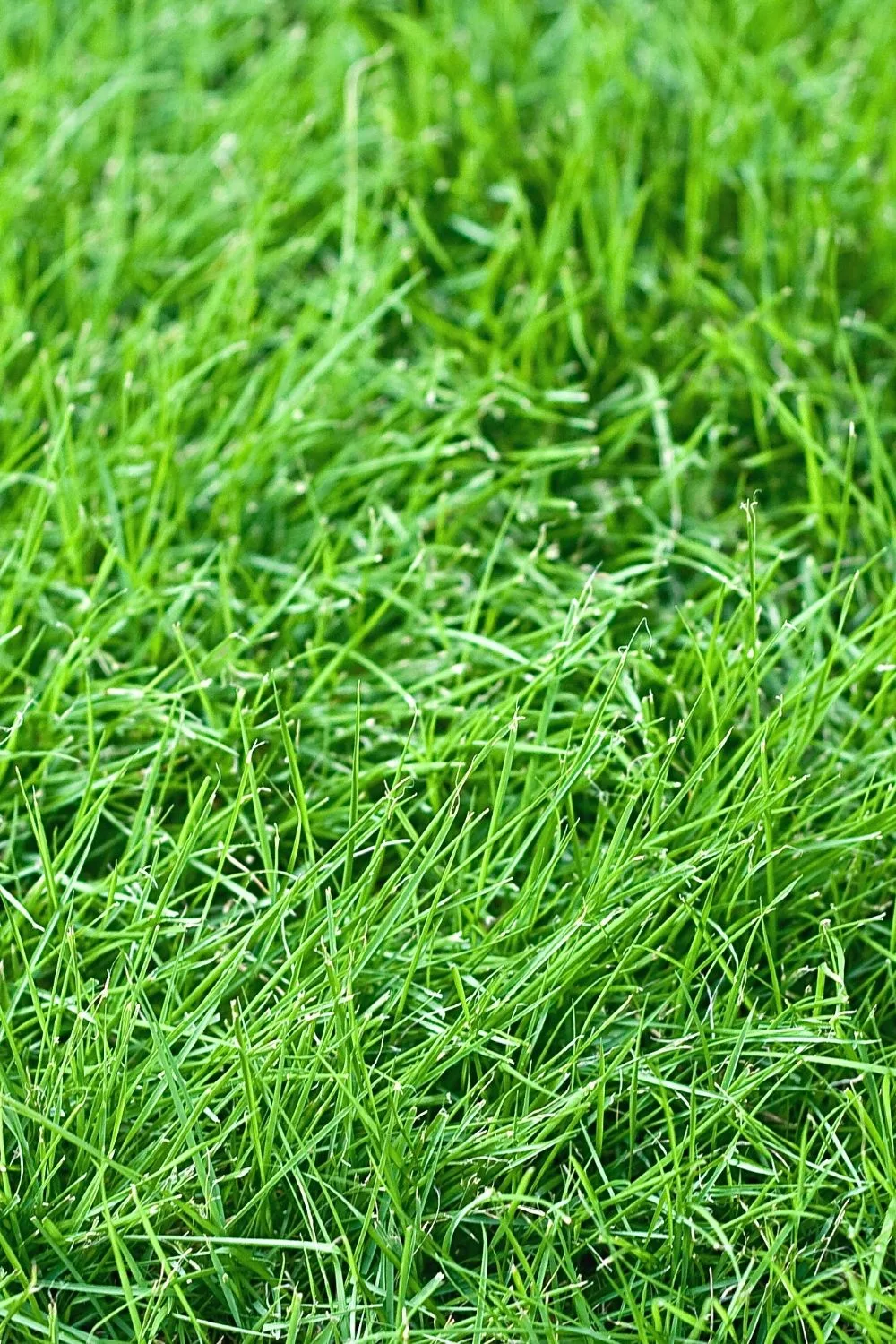
Fine Fescue Lawn Grasses can grow in shaded areas like north-facing balconies if you use soil composed of organic matter
This plant works wonderfully in sunlight.
However, if you want to grow it in a shady location, do make sure that your soil is composed of organic matter.
- Scientific name: Festuca spp.
- Plant Type: Perennial plant
- Kingdom: Plantae
- Temperature: USDA growing zones are 4a to 8a
- Fertilizer: slow-release fertilizer to be used once every month.
- pH: neutral pH
- Soil: medium moisture soil
- Lighting: can survive in full shade
Conclusion About Plants for North Facing Balcony
It is nothing to worry about if you have a north-facing balcony in your room and you are fond of gardening.
With the right kind of soil and other caring techniques, such as proper watering schedule and fertilizing, you can grow almost anything on your balcony.

Daniel has been a plant enthusiast for over 20 years. He owns hundreds of houseplants and prepares for the chili growing seasons yearly with great anticipation. His favorite plants are plant species in the Araceae family, such as Monstera, Philodendron, and Anthurium. He also loves gardening and is growing hot peppers, tomatoes, and many more vegetables.

![30 Plants for North Facing Balcony — Best Guide [2024]](https://plantophiles.com/wp-content/uploads/2022/04/30-Plants-for-North-Facing-Balcony-720x405.jpg.webp)
